After I had drunk freshly squeezed orange juice in the tavern at Platanos viewpoint enjoying the beautiful view, I headed for the city of Agios Nikolaos. At some point, the road took me by a beach the name of which turned out to be Voulisma Beach. Before this moment I had not even seen any recommendation for the beach, but driving beside it I was amazed by the colours and simply had to make a stop and park the car in order to walk here a little. Between the road and the beach there were some construction works, including those on an access road, so I walked only to a couple of elevations from where I could see nicely a smaller bay that actually comprises two separate beaches. The view was spectacular!
 Voulisma Beach
Voulisma Beach
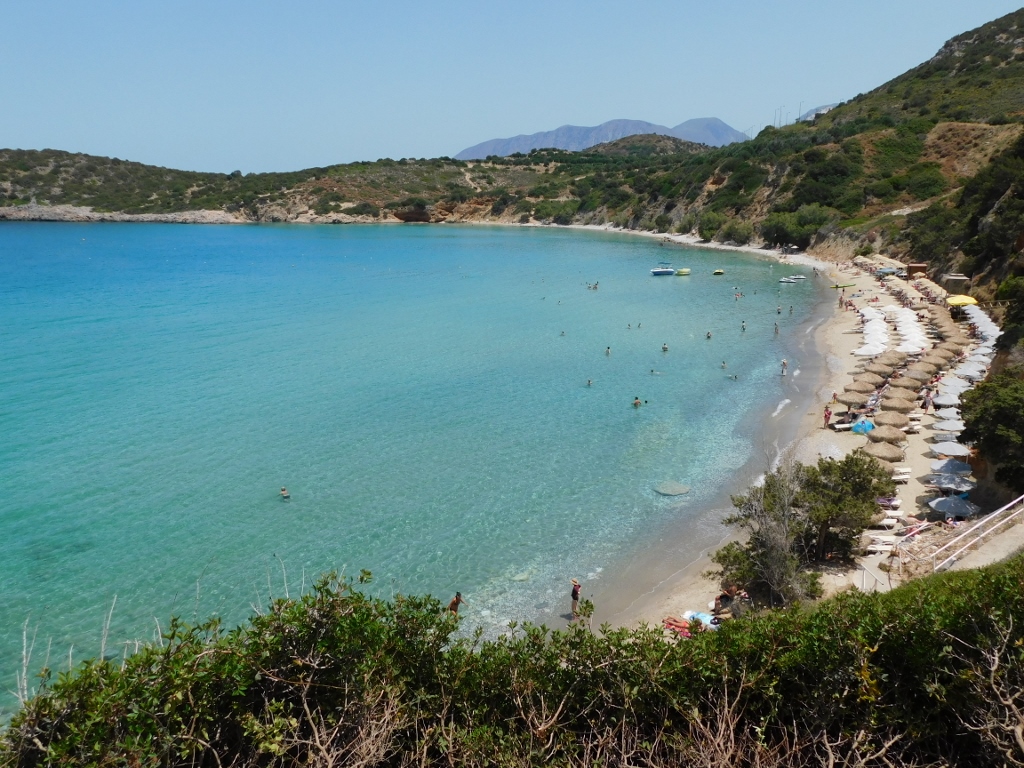 Voulisma Beach
Voulisma Beach
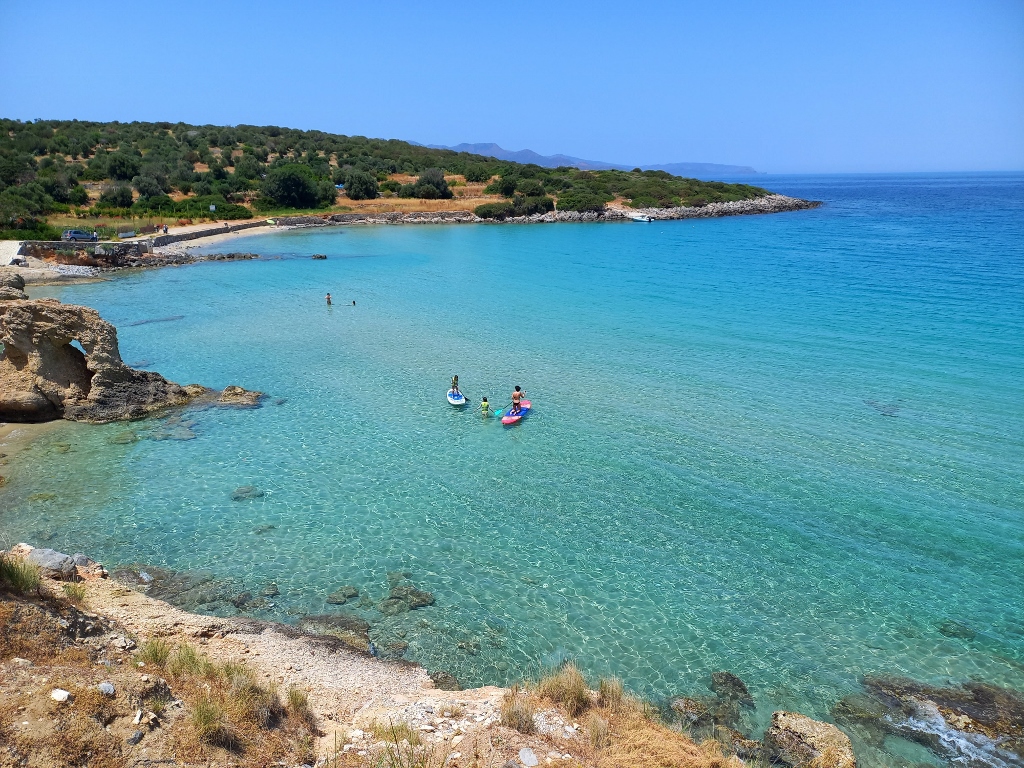 Voulisma Beach
Voulisma Beach
 Voulisma Beach
Voulisma Beach
Voulisma Beach is located at the very back of the large Mirambelo or Mirabello Bay. Both of these names may be found on the internet, although I believe the correct name should be Mirambelo.
Around the bay, over the length of around 40 km, from village Mochlos in which I had already been to the city of Agios Nikolaos where I was going now, there is a riviera of the same name – Mirambelo Coast. Needless to say, this magnificent riviera comprises numerous beaches, although it is also possible to visit some important Minoan sites, such as Gournia.
Still, after this unplanned break at Voulisma Beach, I simply drove to the hotel that I had booked for two nights and that was located a couple of kilometres north of Agios Nikolaos. I did not have any clear plans for the rest of the day and thought that I could walk to the city, but in the end I decided to turn this into a “proper” mini-vacation.
To start with, I enjoyed while sitting at the balcony with a splendid view.
 View at the Mirambelo Bay
View at the Mirambelo Bay
Then I even lay down a little, sunbathed and read by the hotel pool or admired again the fine view from the mild elevation.
 Part of the accommodation offer along the Mirambelo Coast
Part of the accommodation offer along the Mirambelo Coast
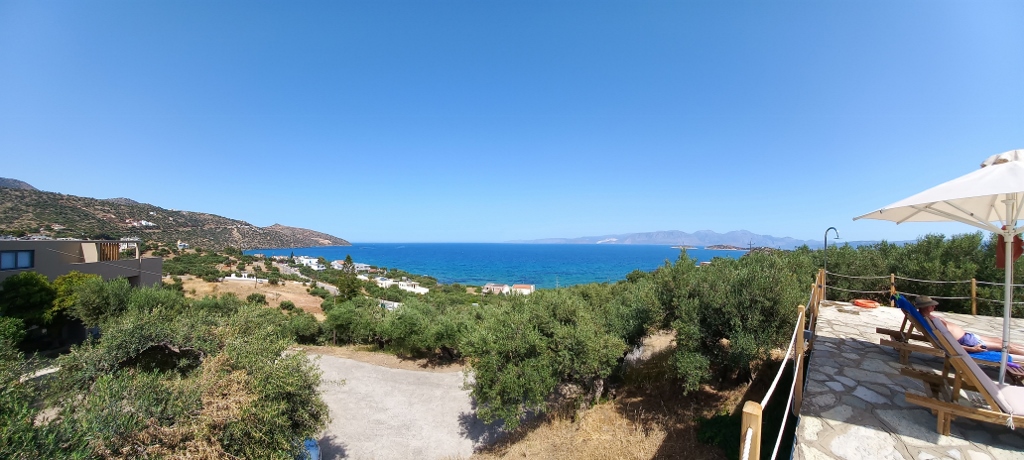 View at the Mirambelo Bay
View at the Mirambelo Bay
Still, this became slightly boring after some time, so I changed and went for a walk by the shore. Admittedly, this was in fact a walk alongside the road, but my plan was to have a look at a couple of beaches. One is called Havania Beach and the other one, like the bay – Mirambelo Beach.
 Havania Beach
Havania Beach
 Mirambelo Beach is to the left
Mirambelo Beach is to the left
Next to Mirambelo Beach there is almost a “twin” beach (to the right in the photo above) where there was nobody, although some beach beds were nicely laid down there. It seemed to me this part belonged to a hotel on the other side of the road.
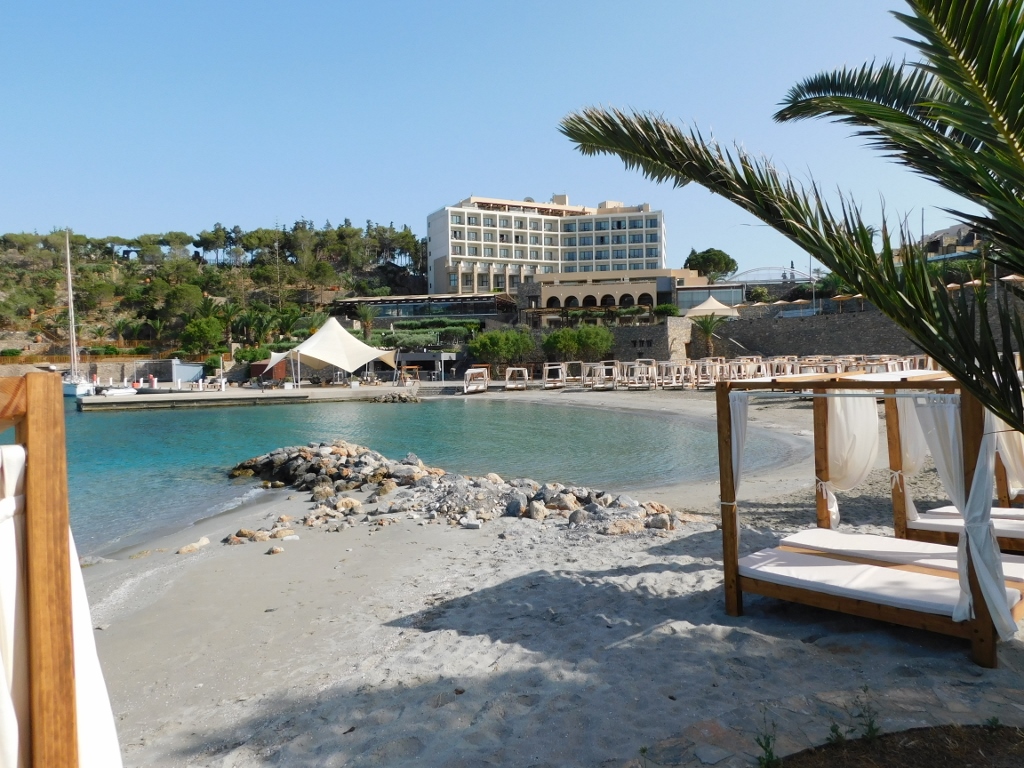 The beach adjacent to the Mirambelo Beach
The beach adjacent to the Mirambelo Beach
Even Mirambelo Beach was almost completely empty – apart from me, there were two Greek ladies with children, but the overall impression was that the season had not even started. The Greeks were sitting on beach towels, while the sun loungers were empty. On the other hand, I did see a pricelist for their rental and this was – very, very expensive. I just walked around for a short while and then I returned to the main road.
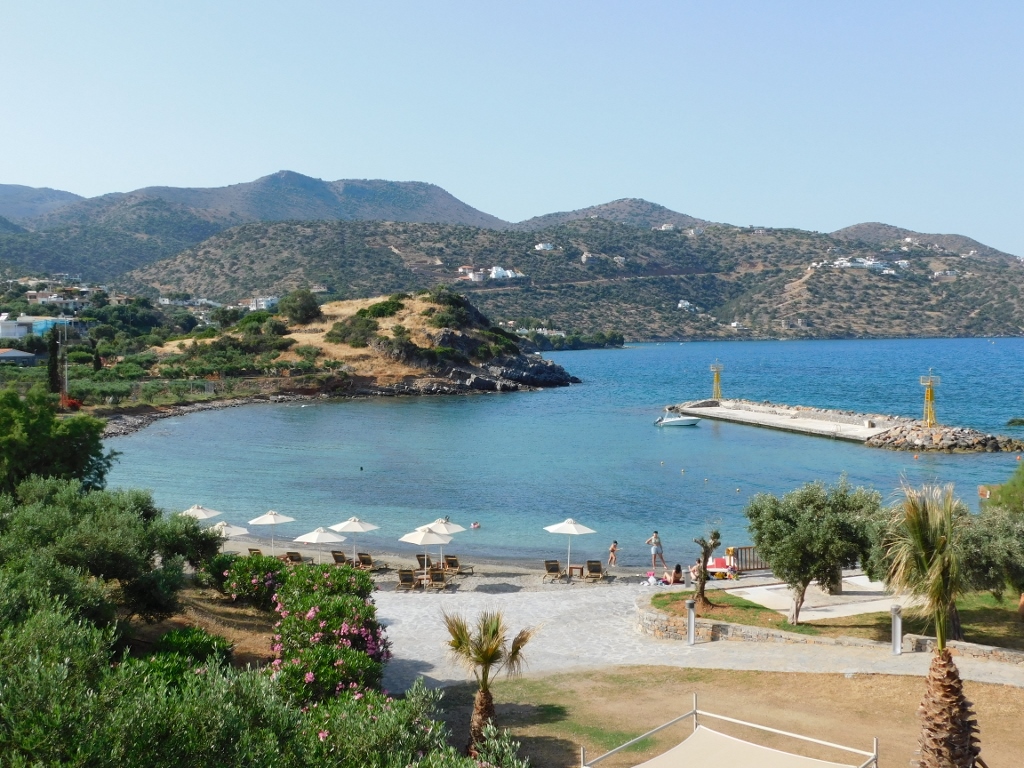 Mirambelo Beach
Mirambelo Beach
This short walk was enough for me to decide not to go to Agios Nikolaos on foot. I think it would be boring and uninteresting. That’s why I returned to the hotel. I rested a little more on my room’s balcony and then I went for an early dinner. During the walk I realised there were no open restaurants nearby and I was too lazy to get into the car and search for a place where to eat something. After all, I was at a hotel that had its own restaurant.
As opposed to some of the hotels at which I had stayed during this journey, which were more modest and older, this one in Agios Nikolaos seemed quite new and it was certainly “modern” – all glass and metal (except for the walls). I did not care – I had a nice room and a beautiful balcony. But, the food offered at the restaurant was in line with the hotel – “modern.” As a friend of mine who used to live in Spain would say for such food – dibujo - meaning a drawing, i.e., extremely sparse. Having eaten one dish, which was certainly tasty, albeit insufficient, I realised I was still hungry (despite the fact that I had eaten all the bread), so I ordered another dish.
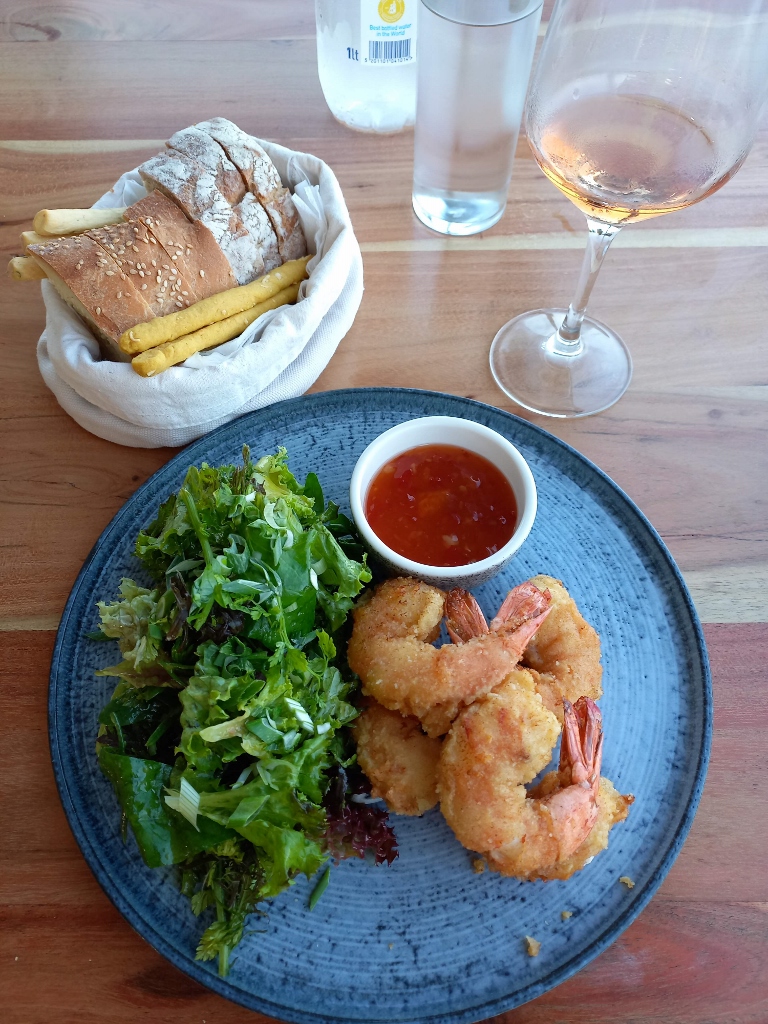 Shrimp tempura
Shrimp tempura
It would have been too much if I had now ordered a main course in the shape of an entire fish, so I opted again for a medium solution. This one had a glamorous name – crab salad with avocado and caviar. In terms of quantity, this was quite sufficient, but this salad had such a bland taste that it was completely incredible. On the other hand, it was a proper - dibujo.
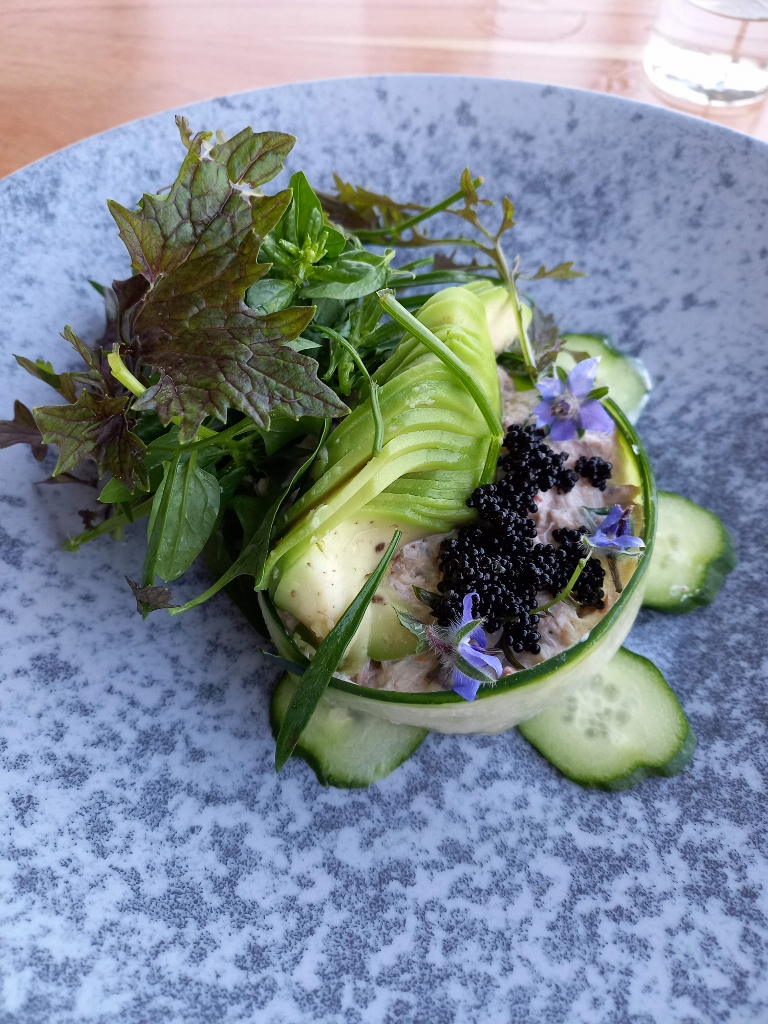 Crab salad with avocado and caviar
Crab salad with avocado and caviar
In order to comfort myself because of the poor choice of food, after a glass of rosé that I took with the first dish, I also ordered a cocktail for the end.
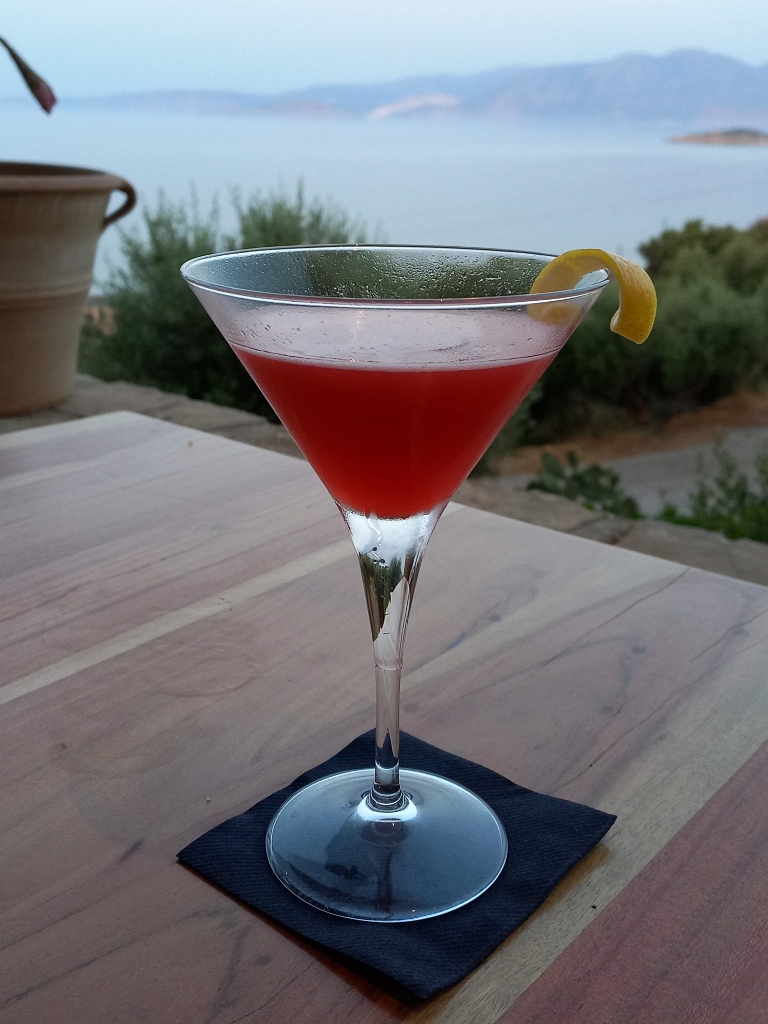 After dinner cocktail
After dinner cocktail
And since I had already declared this afternoon and evening a “proper” vacation, I went to bed rather early.
The following morning started quite peacefully and in a relaxed manner. There was simply no need to hurry, since my plan was very simple. I was to drive for some 15 minutes to the nearby town Elounda and then transfer by boat to the nearby island Spinalonga. After that, my plan was to walk around the town a little, doing some minor sightseeing, and then to return back to the hotel in order to continue with my “vacation”.
That’s why I first enjoyed a nice breakfast on the terrace of the hotel that provided a splendid view at Mirambelo Bay and a little later I went on the planned trip.
The road to Elounda is winding, but what is important is that it first goes uphill and then downhill. The point is that there is a sort of parking lot on the top where one can stop and admire the beauty of the landscapes, whether one looks towards Agios Nikolaos (if looking back, which I did do, but did not take any photos of) or at the coast towards the small town of Elounda. By the way, the distance between these two places is around 10 km.
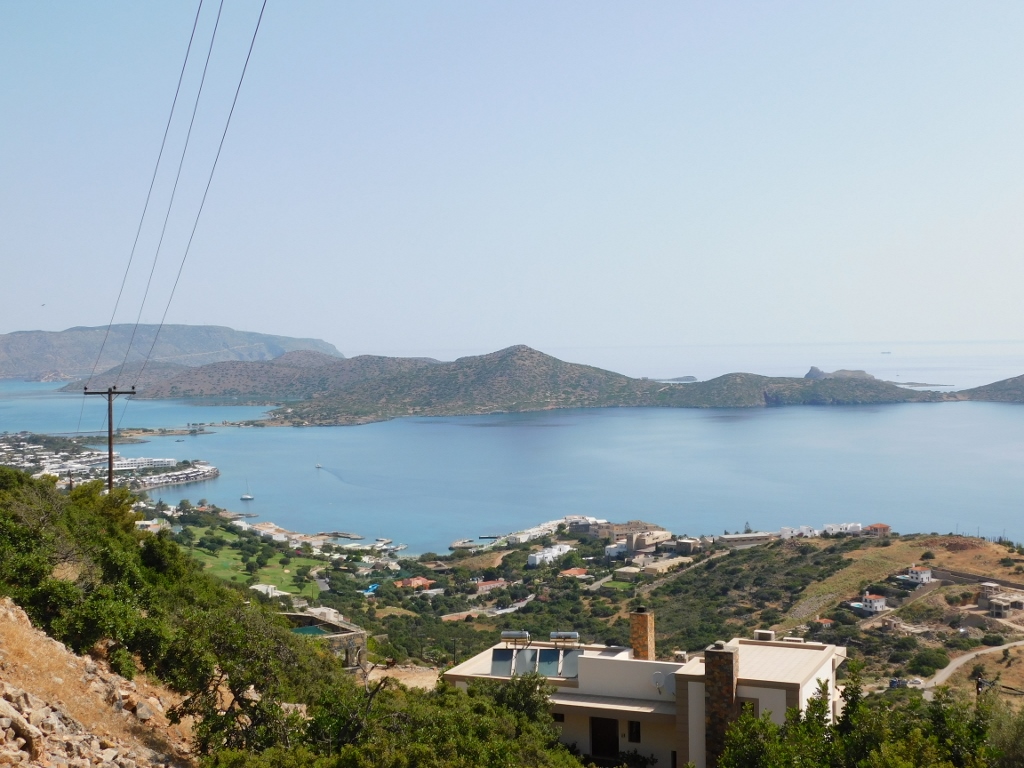 View in the direction of Elounda
View in the direction of Elounda
In the previous photo, you can see Spinalonga peninsula, but this was not the islet of Spinalonga that I wanted to visit. Namely, there is a large peninsula here that is connected to the mainland almost “symbolically” – only by a very narrow isthmus, as well as two small islets. All of this together is called Kalydon.
In addition, even the town of Elounda can be found in different guidebooks under the name of Shisma, which in fact is the name of a village and a beach that are a part of town Elounda. I don’t quite get it why in this part of Crete there is this problem with several names for the same place or there are several places with the same name, while all of this is in the same area, but that’s what it is.
So, I got to Elounda, parked the car near Shisma Beach and then I went to the part of the port from which boats leading to Spinalonga islet leave.
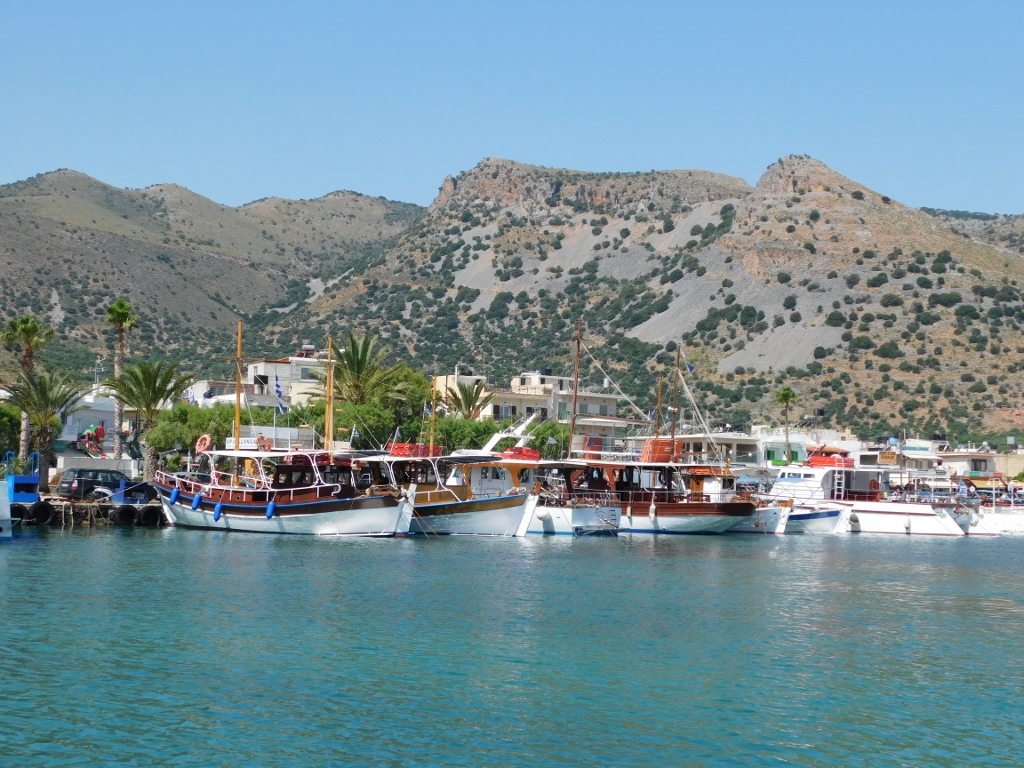 Boats in the port of town Elounda
Boats in the port of town Elounda
The main reason why I came to Elounda was to go to the islet of Spinalonga where there is an impressive fortress. Spinalonga islet can be reached, certainly by boat, either from town Agios Nikolaos or from Elounda or from village Plaka that is located right across the islet. I decided to go with the middle variant.
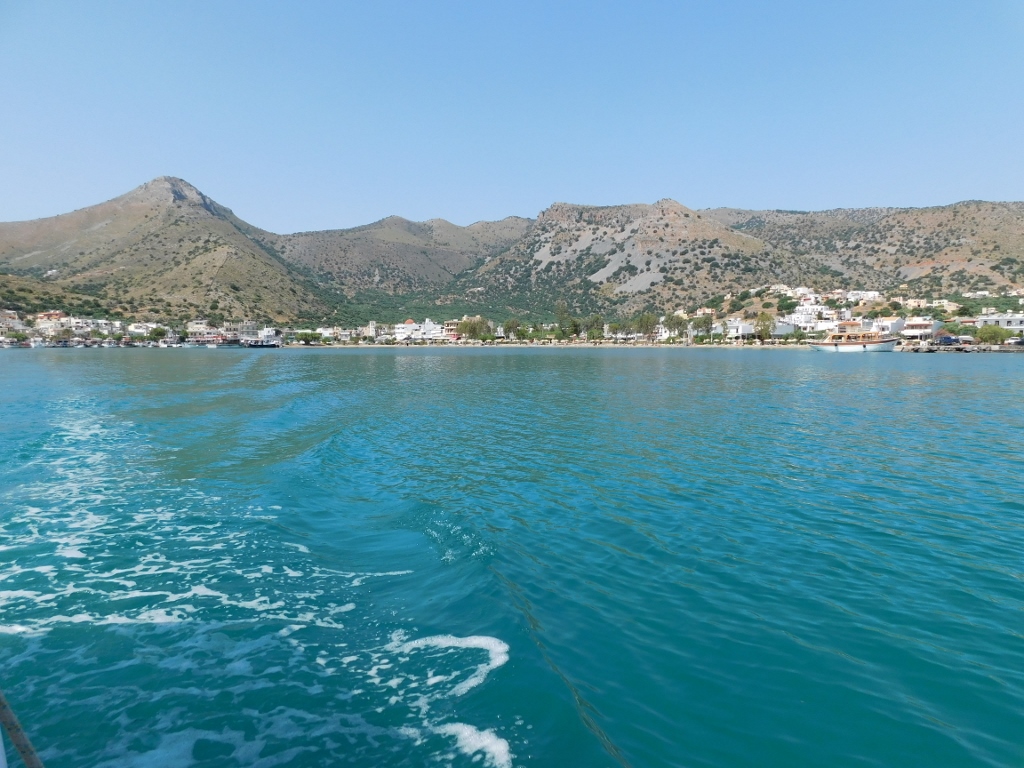 Going on a boat trip
Going on a boat trip
The boats leave the port approximately every half an hour and this is where a return ticket needs to be bought, while the ride is around 15-20 minutes. When you disembark on the islet, you first need to buy a ticket for the visit to the fortress that practically covers the entire surface of the islet, except for that small area where the pier is. Taking into account that I came here for an individual trip, i.e., without a guide, the return boat ticket and the entrance ticket cost 20 euros in May 2022 (with departure from Elounda; it is slightly cheaper from Plaka and almost certainly more expensive from Agios Nikolaos). This is perhaps not that favourable, especially if more people are visiting, but it is important to keep in mind that Spinalonga fortress is very interesting, plus it is on the UNESCO’s Tentative List for world heritage.
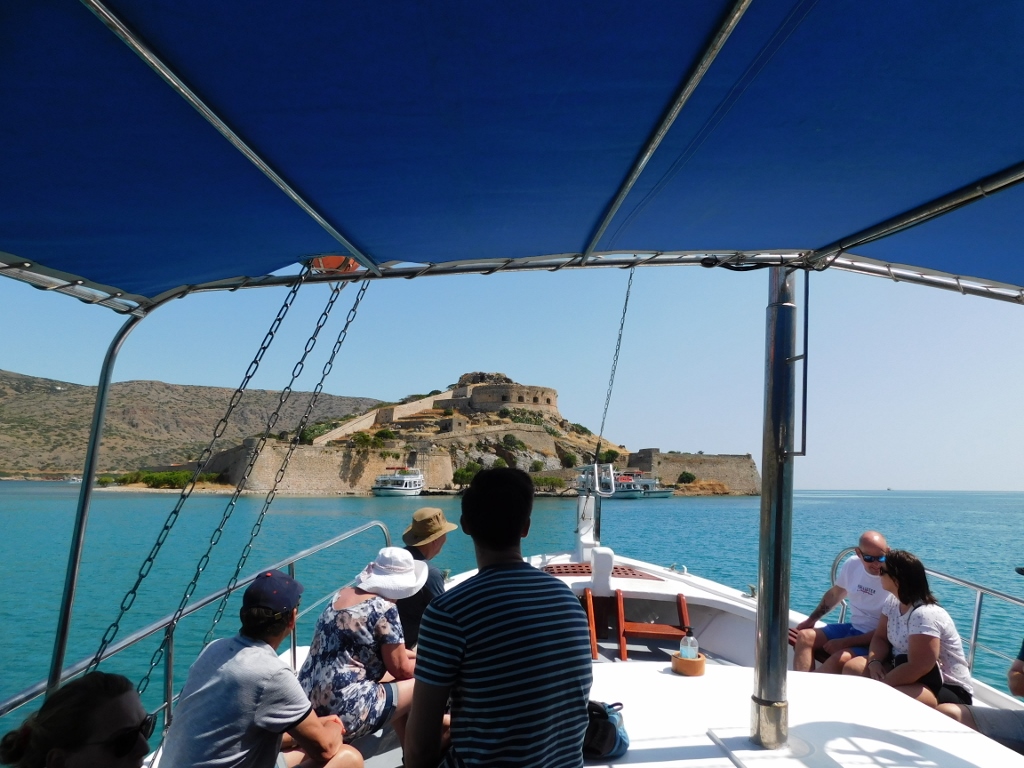 Getting close to Spinalonga
Getting close to Spinalonga
So, this is a rocky islet that is situated at the entrance into a deep bay and a natural harbour in Elounda. This smaller bay is located on the west side of the large Mirambelo Bay. Elounda Bay is formed by the mainland on one side and Spinalonga peninsula on the other and it is precisely the isthmus that leads to Spinalonga peninsula that constitutes the back of the bay. At the end of the 16th century, the Venetians built here, at the entrance into Elounda Bay, one of their most important fortresses in the Mediterranean. Even after a treaty had been signed to transfer the present-day Heraklion into the hands of the Ottomans in 1669, Spinalonga remained Venetian possession. It was only in 1715 that the Ottomans took over the islet, too.
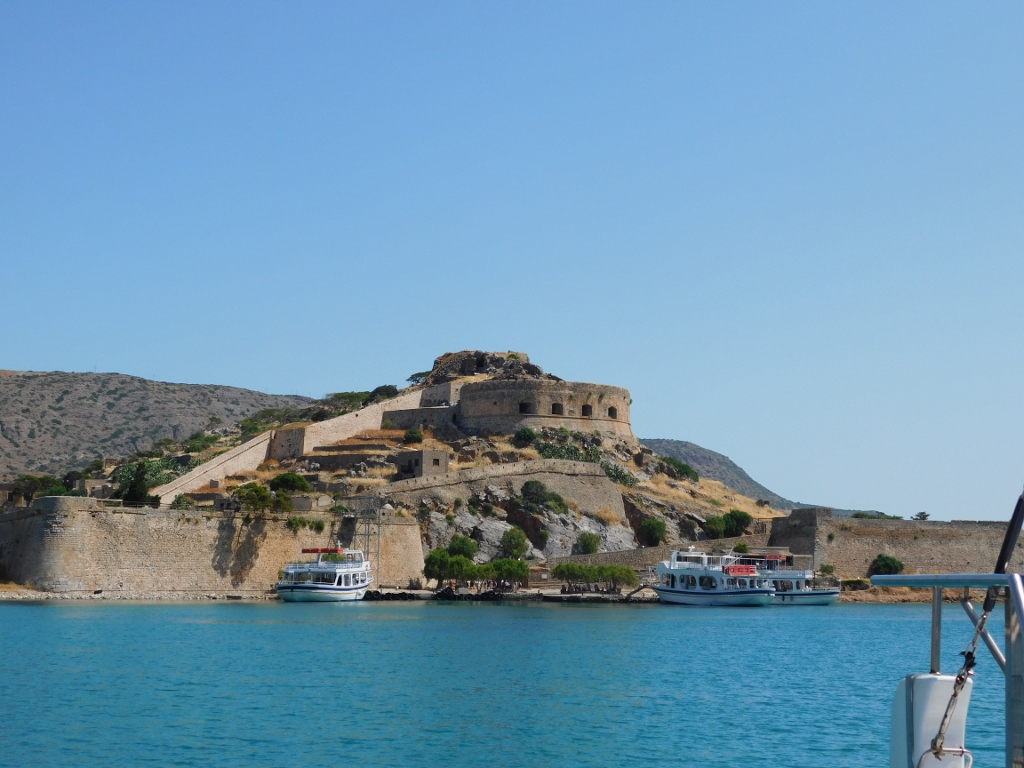 Spinalonga islet
Spinalonga islet
Over time, a Muslim village developed on the foundations of Venetian houses and it spread in a stepped pattern along the west and the south sides. In addition to the residential dwellings, there used to be a large number of shops and workshops, so much so that by 1881 the village became the biggest Muslim commercial centre in Mirambelo Bay.
At the end of the 19th century, there was an uprising of the Greek population, the Muslim population gradually kept leaving and in 1903 the last Turks left the islet.
Already in 1904 the islet was chosen to be the place for a hospital for the treatment of leprosy patients. In other words, a leper colony was founded here. Those people who suffered from this horrible disease still had the will to live and thus they organised their homes, fell in love, got married, had children, but also died... Practically, the life went on here just like in any other place. On the other hand, it needs to be said that these people were not left completely on their own, but rather thanks to the funds allocated by the state and the donations they were regularly provided with food and water, as well as health care.
The colony was closed in 1957 and the islet was left abandoned for a couple of decades, until 1976 when an archaeological site was officially set here. Nowadays, this is a place that is visited by a large number of tourists each year, since the fortress as well as the remains of the settlement can be visited in a couple of hours.
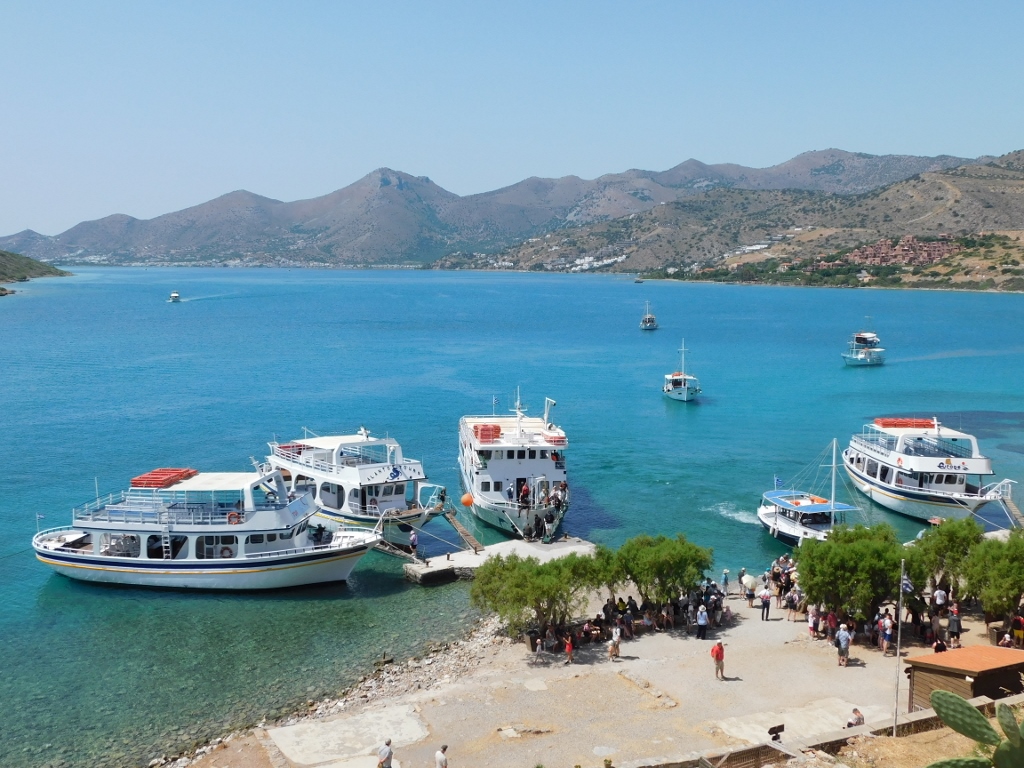 Spinalonga islet: view at the pier and the bay and natural harbour Elounda
Spinalonga islet: view at the pier and the bay and natural harbour Elounda
First I went to the southeast Donato bastion that is closest to the entrance. There is also the graveyard of the leper colony (1904-1957).
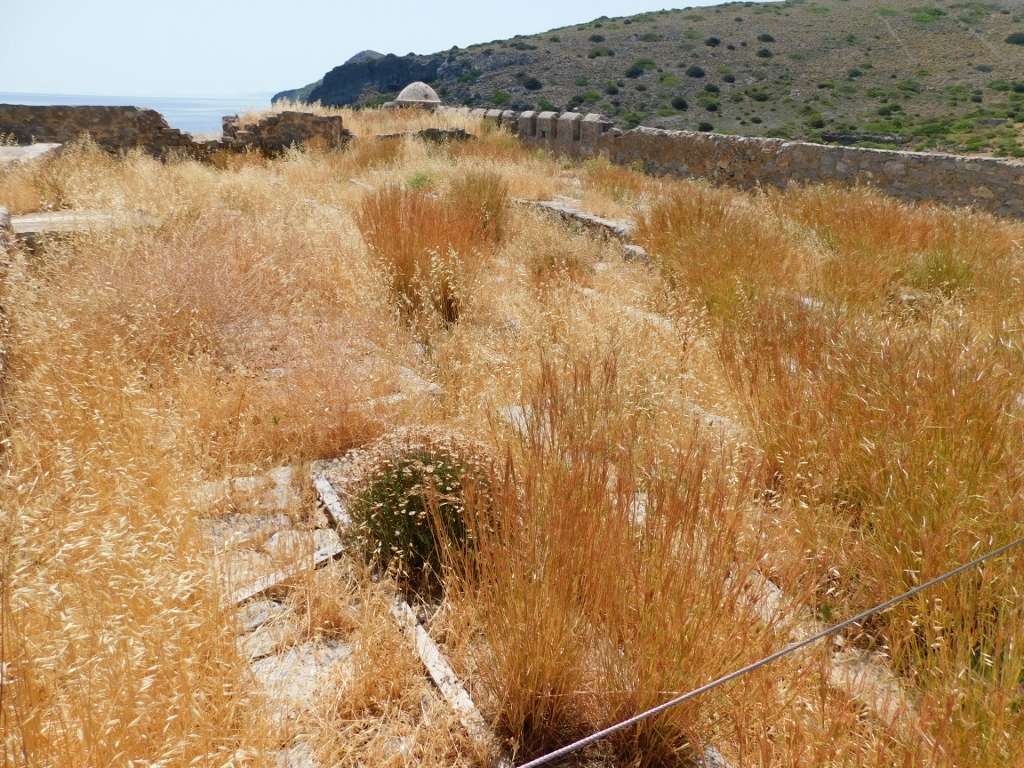 Spinalonga islet: leper colony cemetery
Spinalonga islet: leper colony cemetery
From here it is also possible to see well the south half-moon bastion on the top of the fortress, since there is another one on the north side, as well as the Muslim cemetery on the east side of the islet.
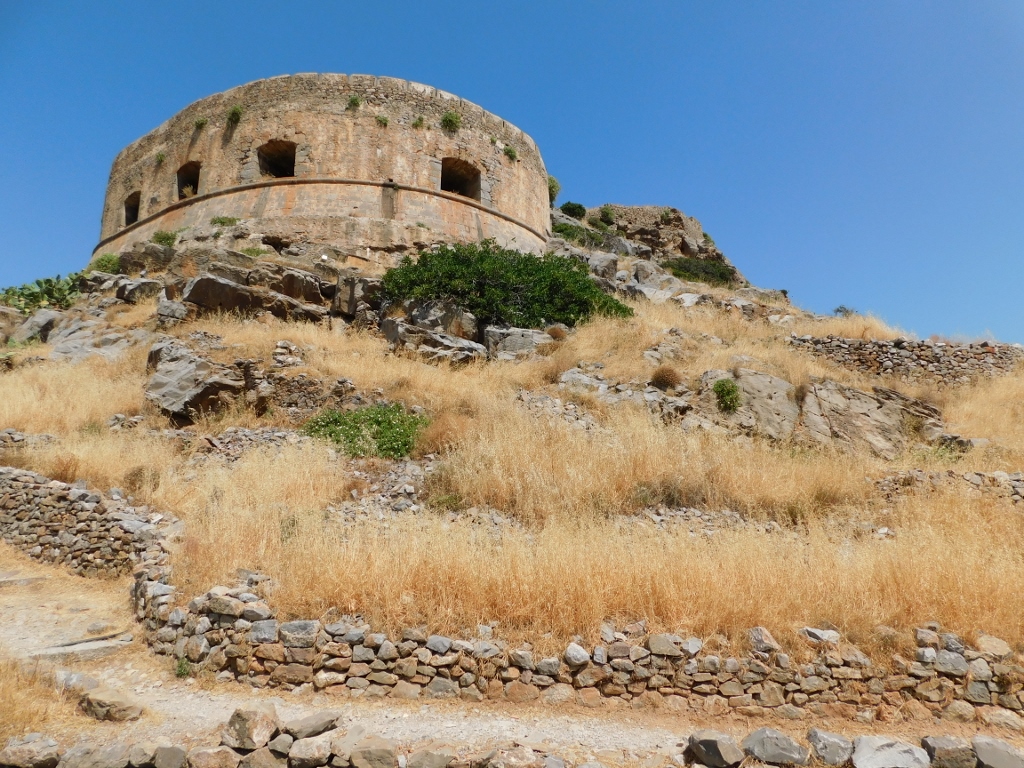 Spinalonga islet: the half-moon bastion
Spinalonga islet: the half-moon bastion
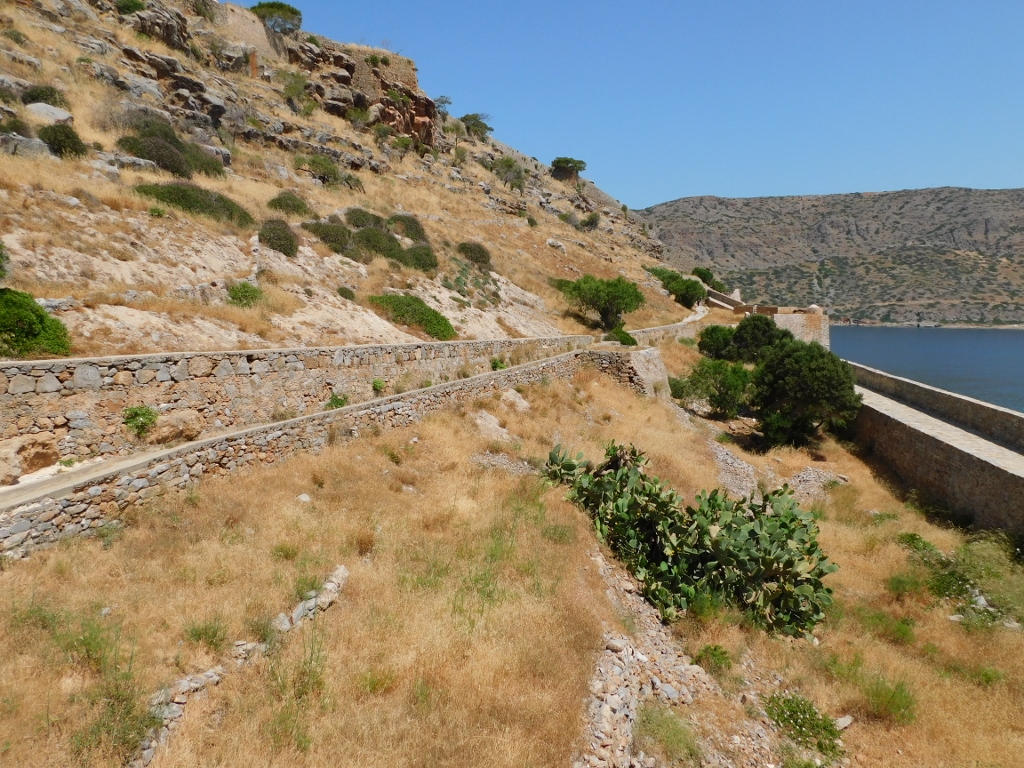 Spinalonga islet: area of the Muslim cemetery
Spinalonga islet: area of the Muslim cemetery
I walked a little along the east side of the islet, but I did not go far.
 Spinalonga islet: view at the open sea
Spinalonga islet: view at the open sea
 Spinalonga islet: a section of the east side
Spinalonga islet: a section of the east side
There is also the Church of St. George here.
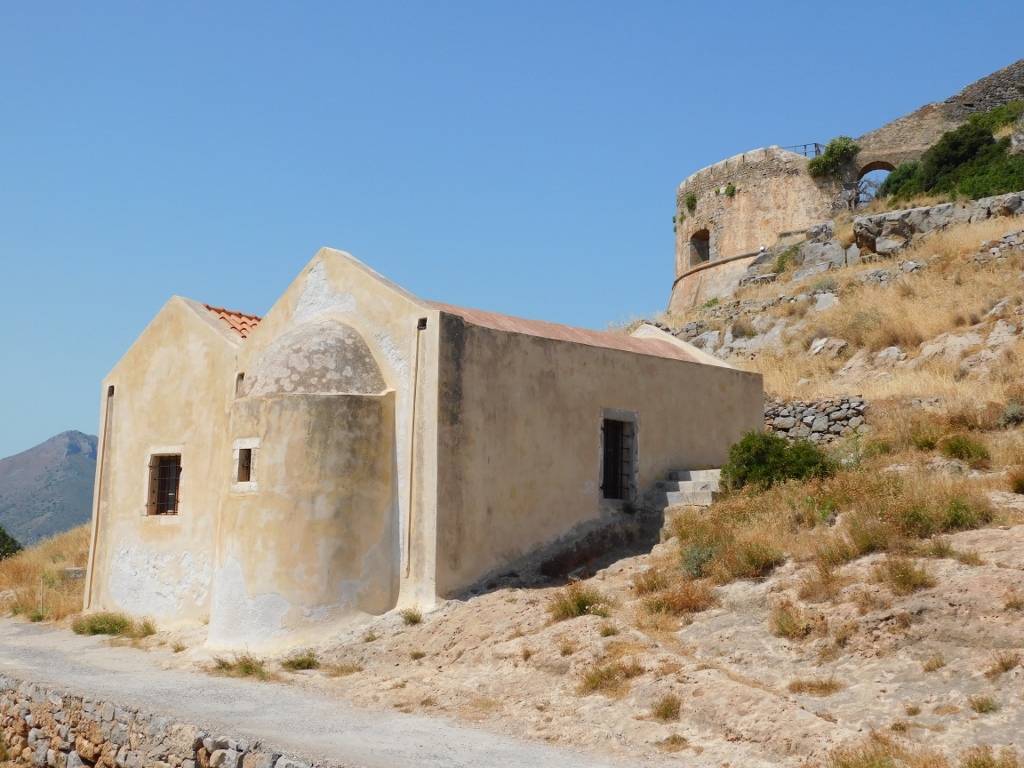 Spinalonga islet: Church of St. George
Spinalonga islet: Church of St. George
Then I climbed up to the half-moon bastion following a stone path. To start with, there was a splendid view from there.
 Spinalonga islet: view at the bay and natural harbour Elounda
Spinalonga islet: view at the bay and natural harbour Elounda
As for the bastion itself, its construction and the way it fitted into the natural setting are still quite fascinating.
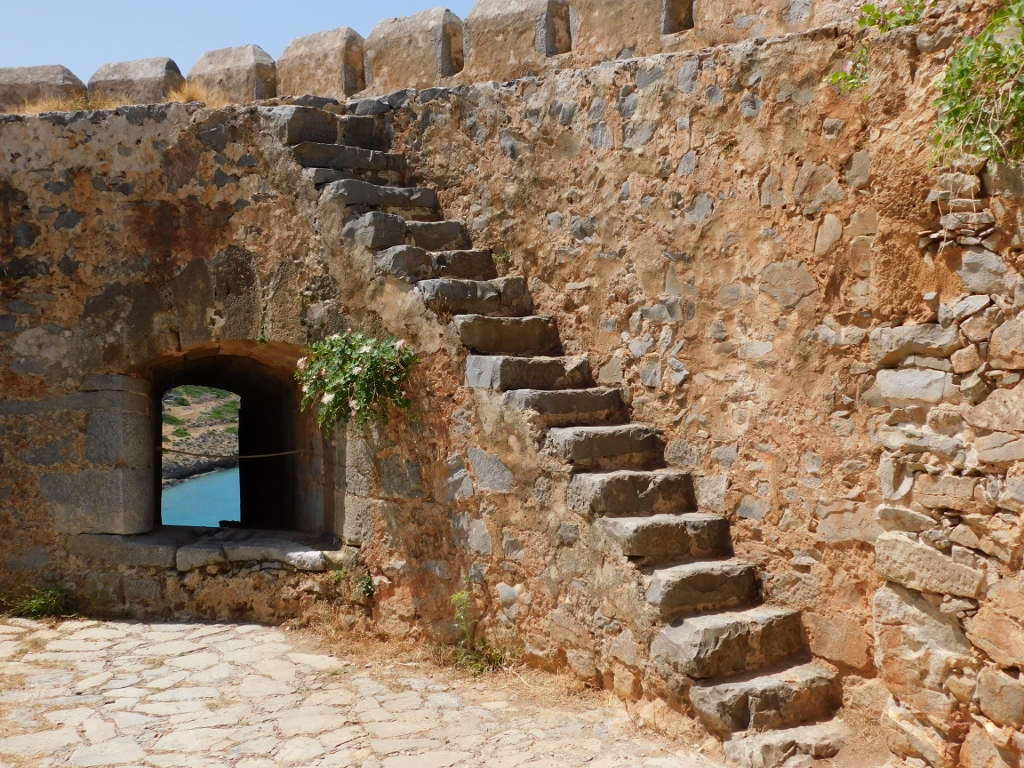 Spinalonga islet: the half-moon bastion, a detail
Spinalonga islet: the half-moon bastion, a detail
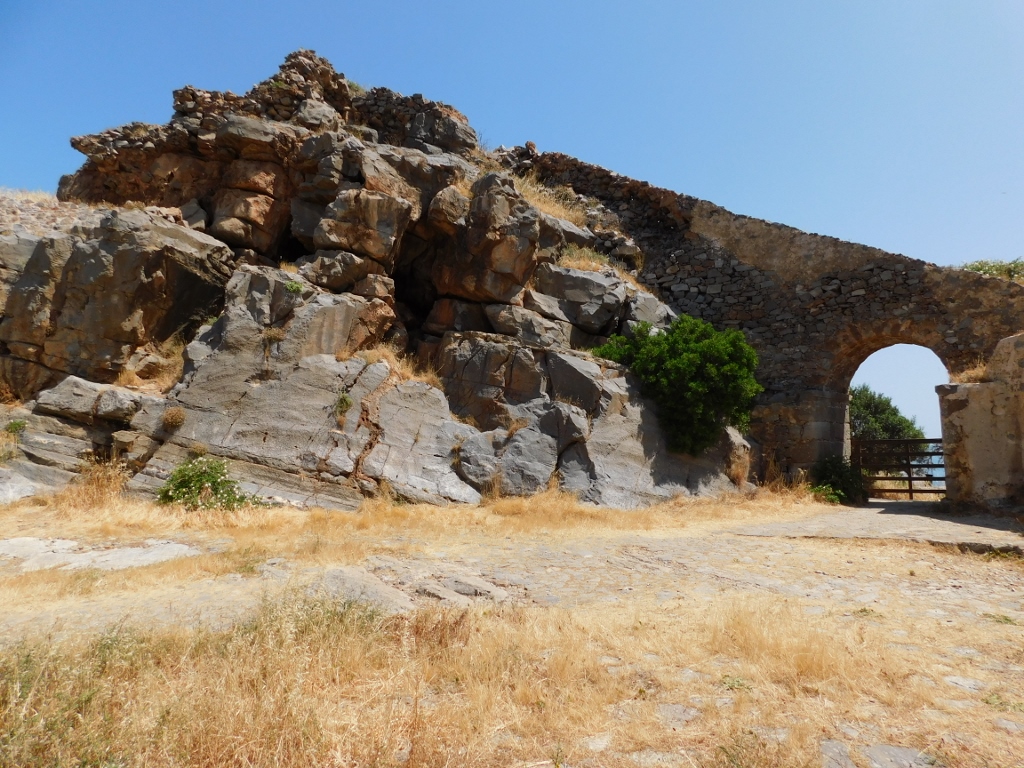 Spinalonga islet: the half-moon bastion, a detail
Spinalonga islet: the half-moon bastion, a detail
I found it particularly interesting to peer through the window openings made in the thick walls. Because of the light contrast, it took me two photos to catch the picturesqueness of these elements.
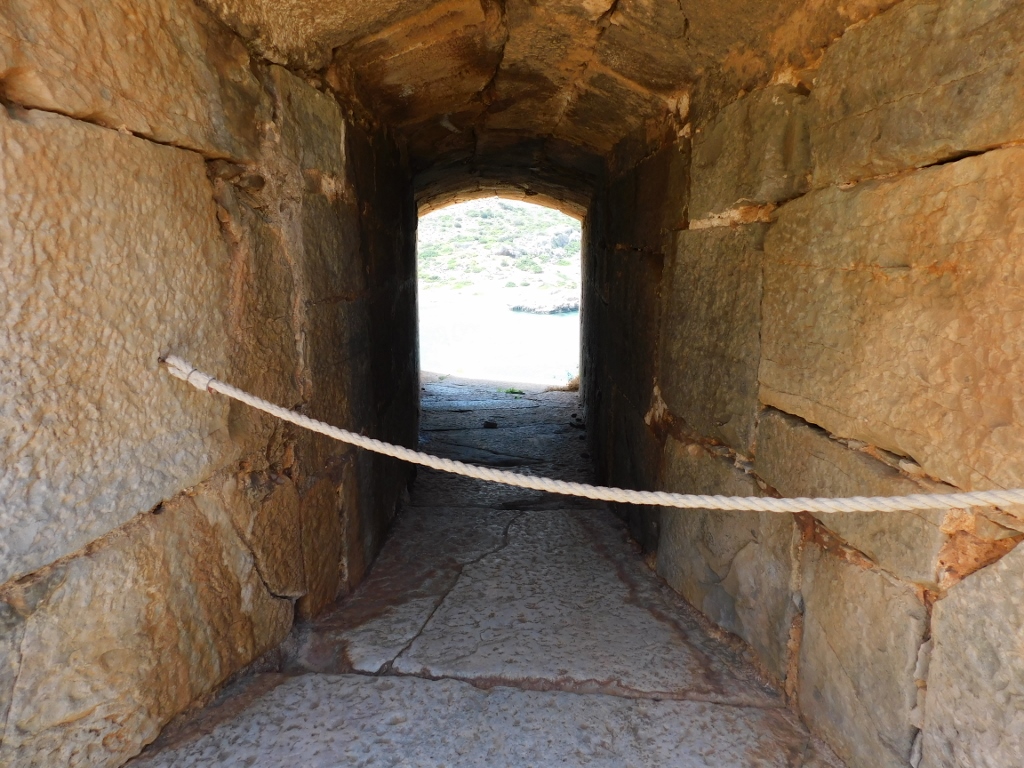 Spinalonga islet: the half-moon bastion, a detail
Spinalonga islet: the half-moon bastion, a detail
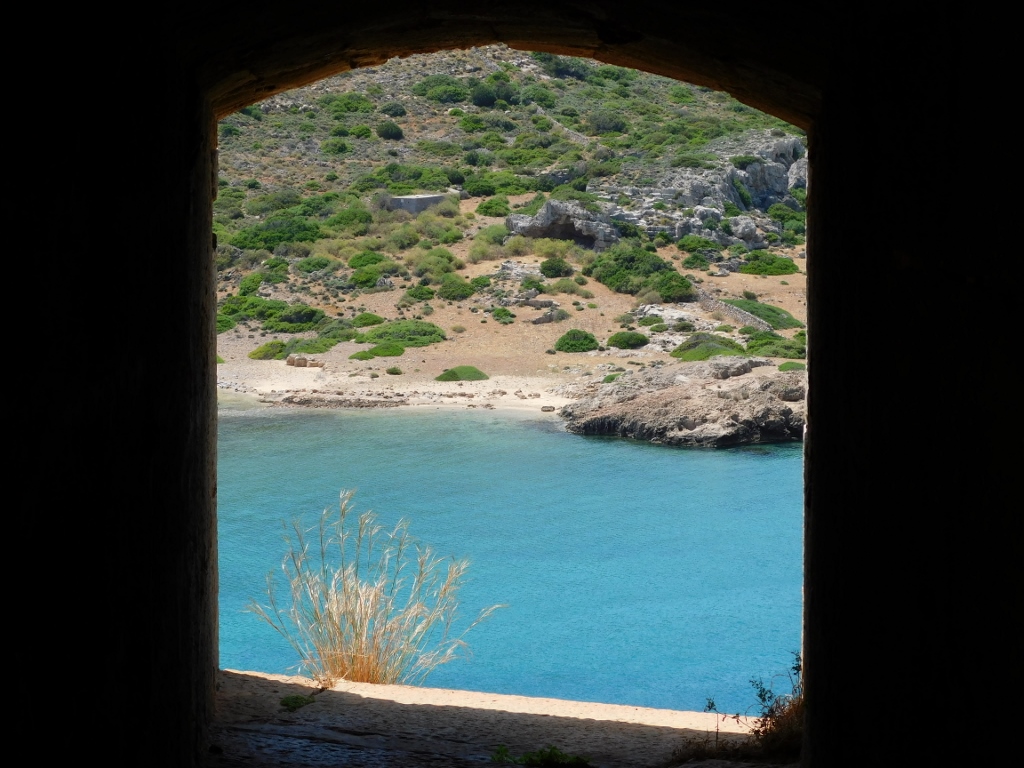 Spinalonga islet: the half-moon bastion, a detail
Spinalonga islet: the half-moon bastion, a detail
Soon I started to go down towards the west side of the islet where there are remains of the settlement.
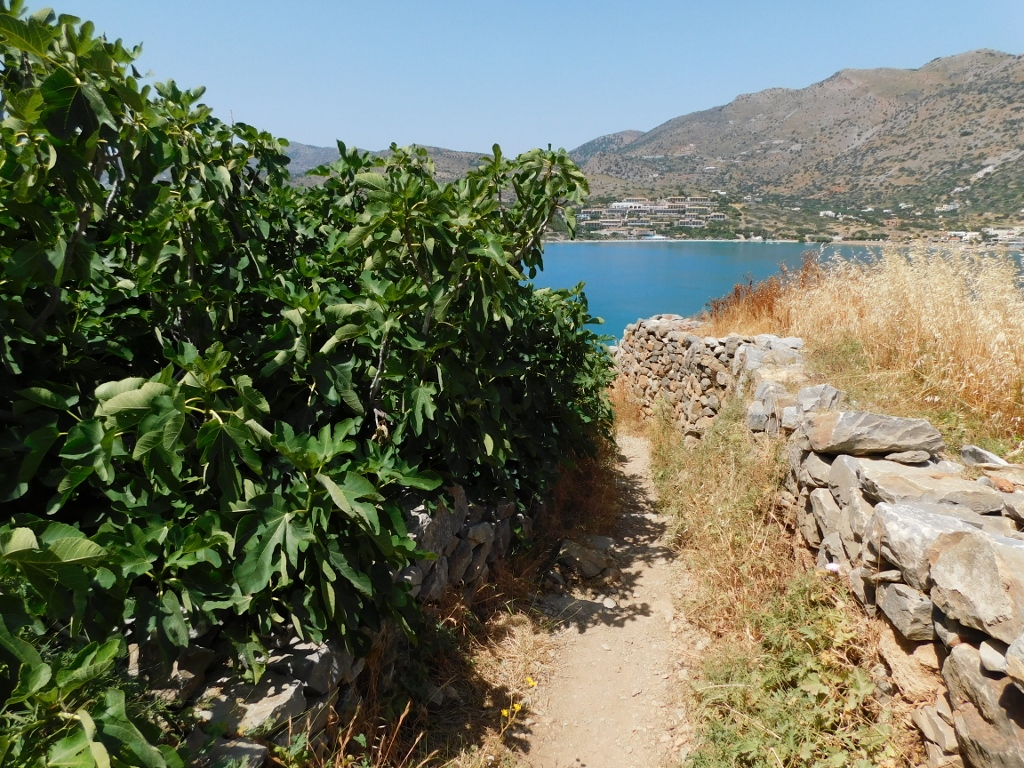 Spinalonga islet, a detail
Spinalonga islet, a detail
Meanwhile, from each point that had some open space around there was a fine view and the sea exhibited amazing colours. I quickly descended to the main street extending along the west shore of the islet.
 Spinalonga islet: west view
Spinalonga islet: west view
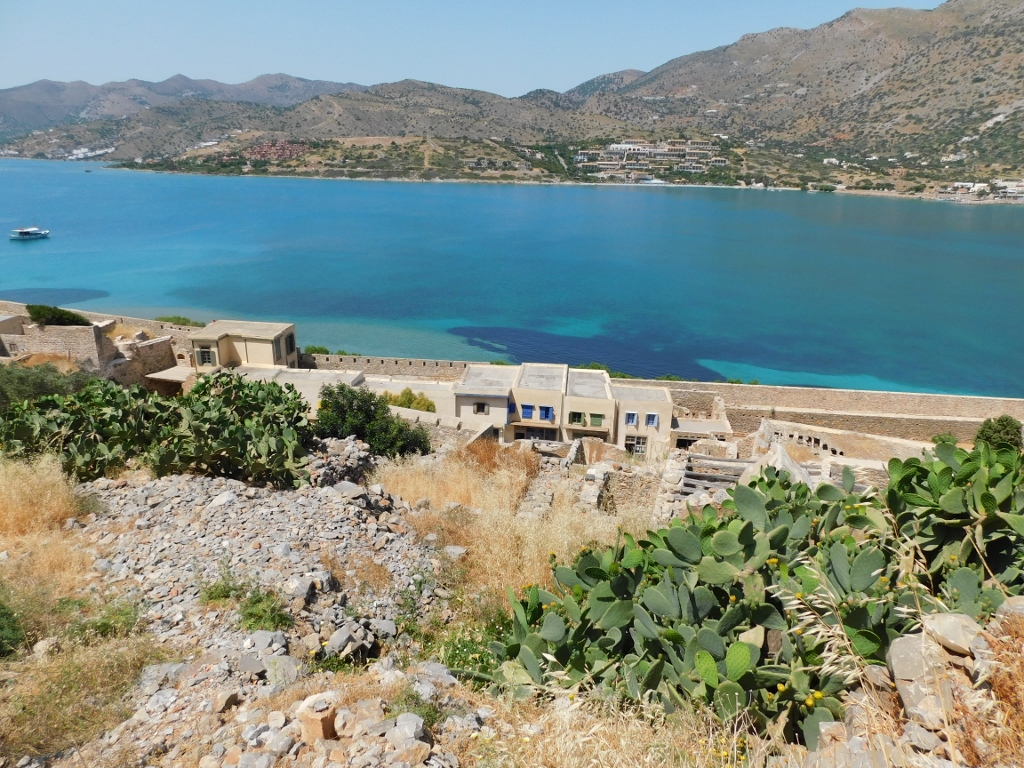 Spinalonga islet: remains of the settlement, a detail
Spinalonga islet: remains of the settlement, a detail
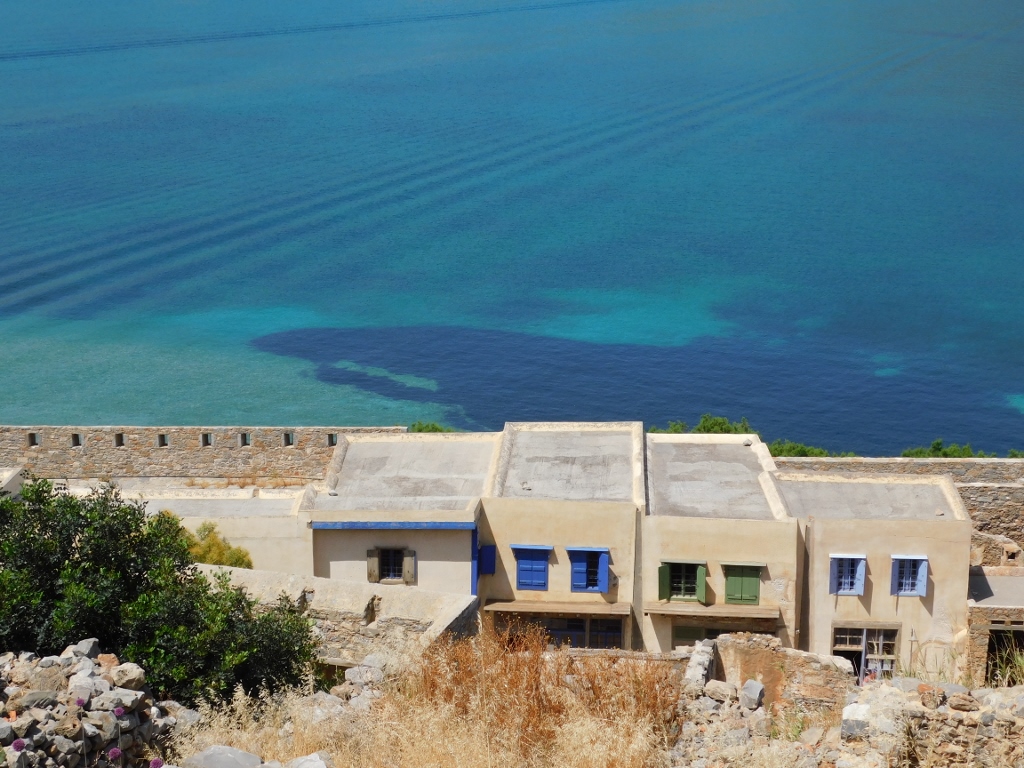 Spinalonga islet: remains of the settlement, a detail
Spinalonga islet: remains of the settlement, a detail
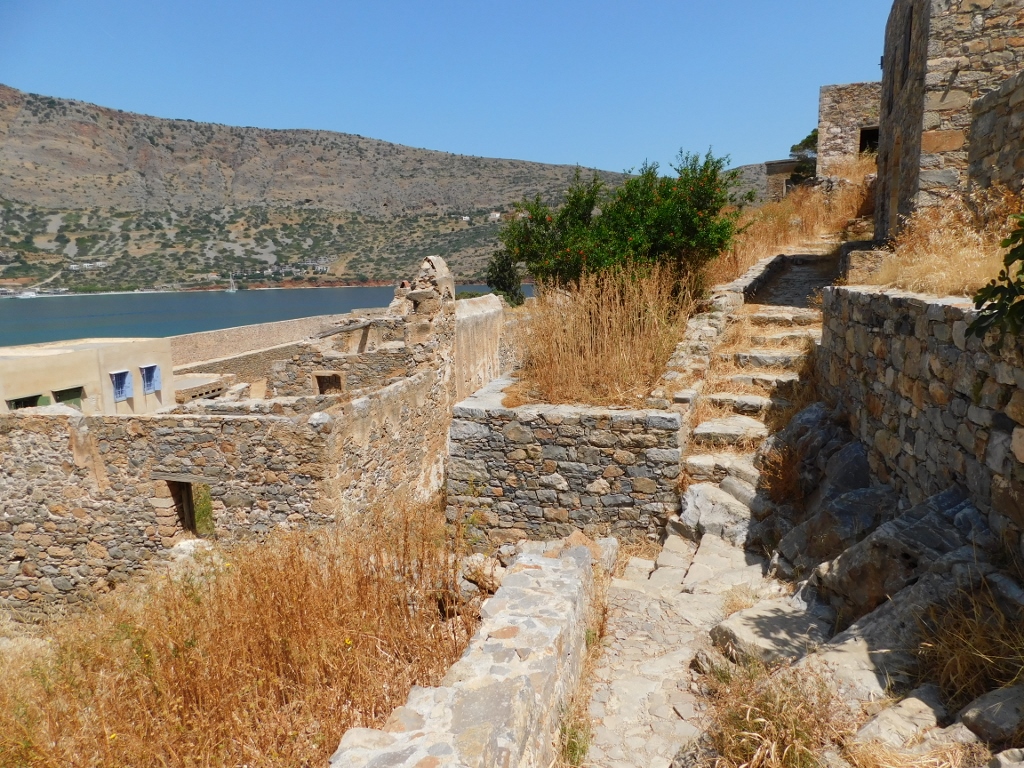 Spinalonga islet: remains of the settlement, a detail
Spinalonga islet: remains of the settlement, a detail
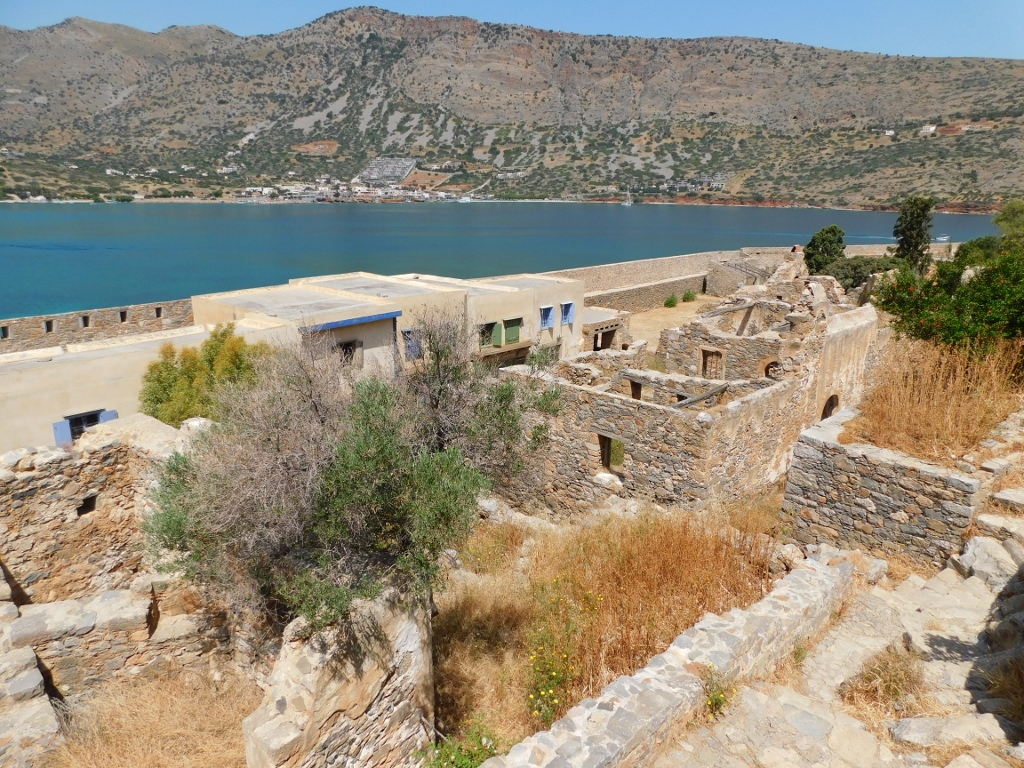 Spinalonga islet: remains of the settlement, a detail
Spinalonga islet: remains of the settlement, a detail
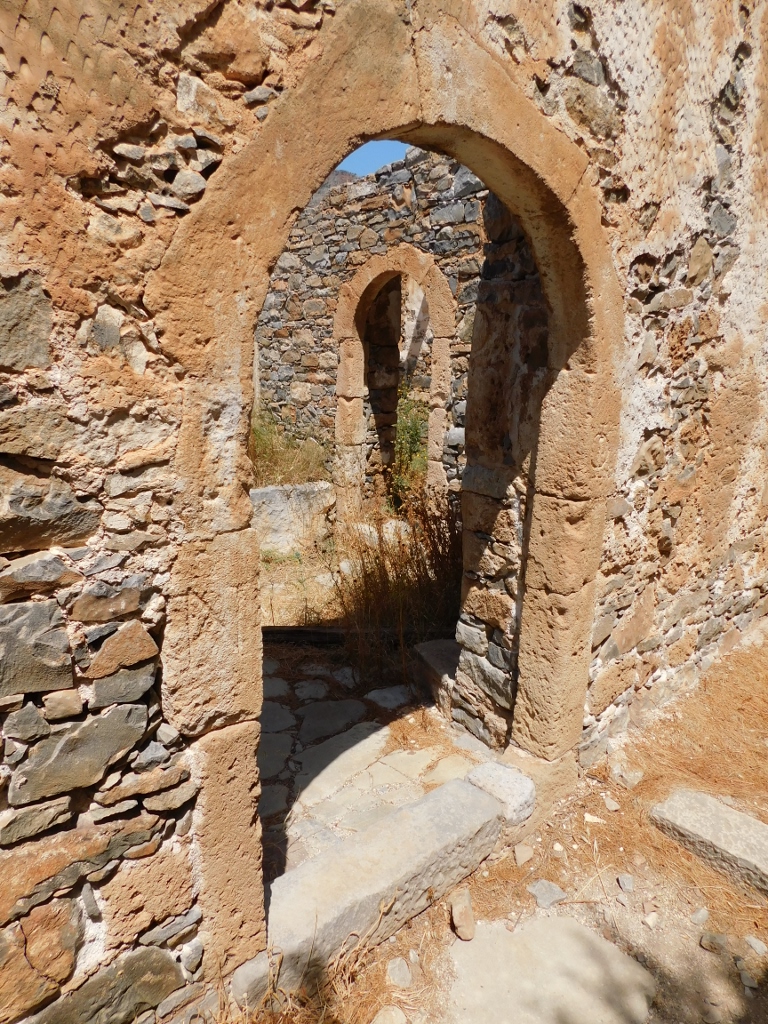 Spinalonga islet: remains of the settlement, a detail
Spinalonga islet: remains of the settlement, a detail
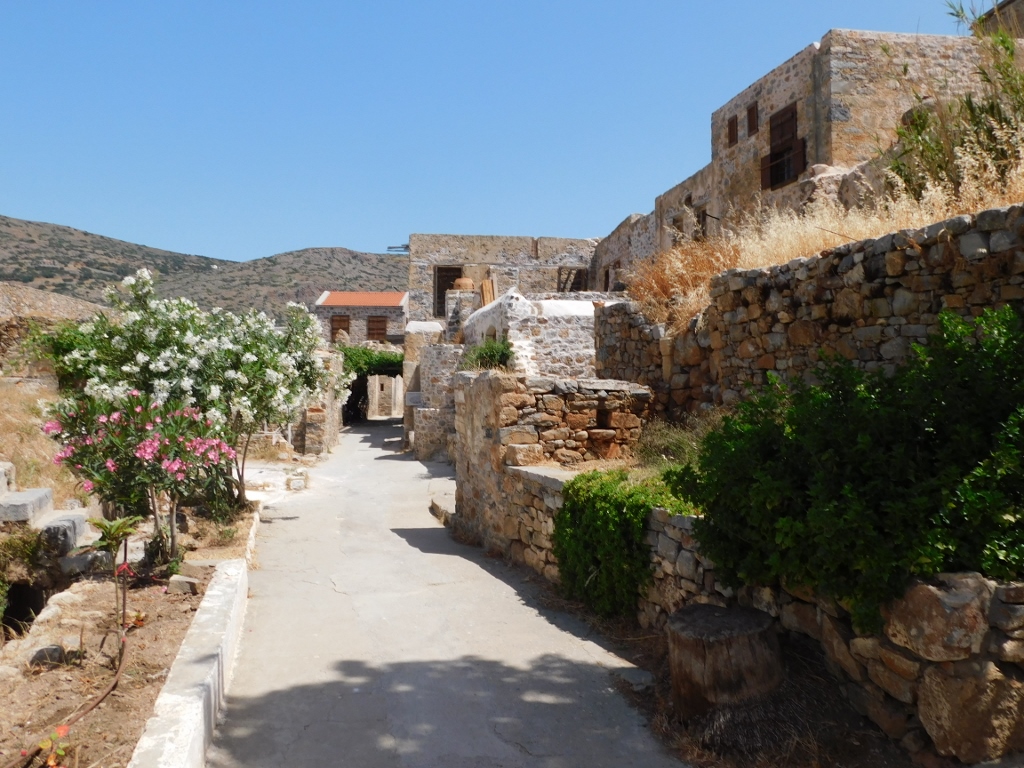 Spinalonga islet: the main street in the settlement
Spinalonga islet: the main street in the settlement
Nowadays, there are also exhibition areas where the story of the life on Spinalonga once upon a time is told using old photographs and exhibits. Also, some old houses are being restored and made prettier, probably in order to expand the tourist offer and to make it clearer to the visitors what it all used to look like.
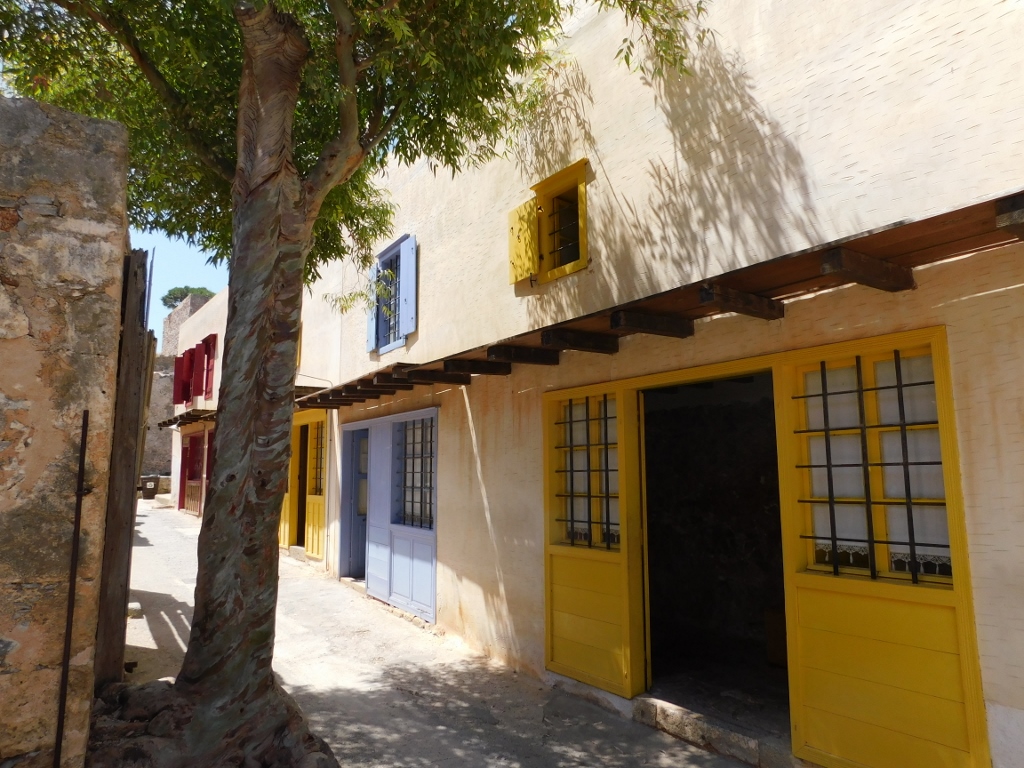 Spinalonga islet: remains of the settlement, a detail
Spinalonga islet: remains of the settlement, a detail
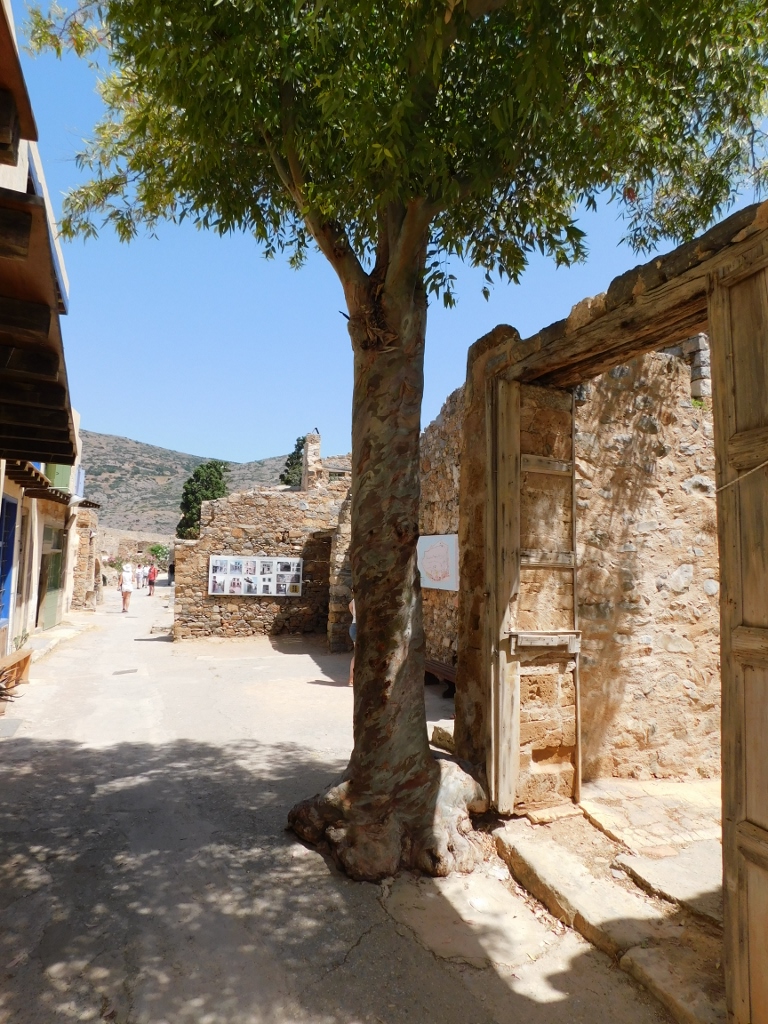 Spinalonga islet: remains of the settlement, a detail
Spinalonga islet: remains of the settlement, a detail
The maps displayed here show that the researchers know exactly which buildings were made at the time when the Venetians ruled the islet, which were constructed during the Ottoman period and which in the 20th century. Still, I did not go into that level of details and just strolled around here taking photos from time to time.
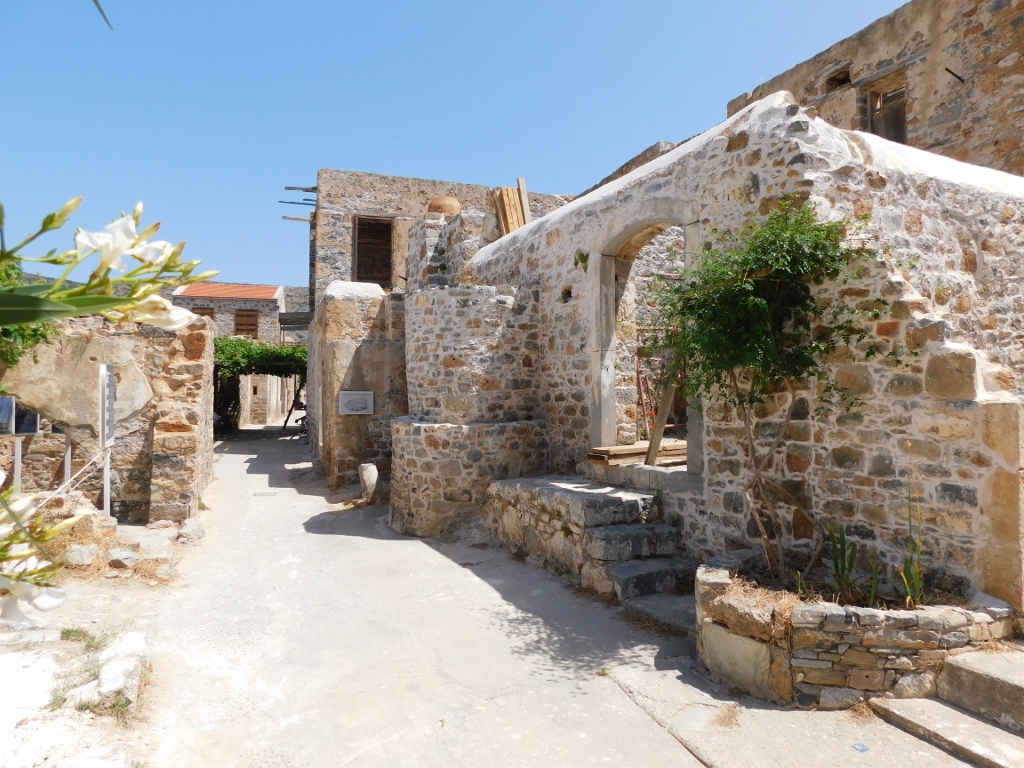 Spinalonga islet: remains of the settlement, a detail
Spinalonga islet: remains of the settlement, a detail
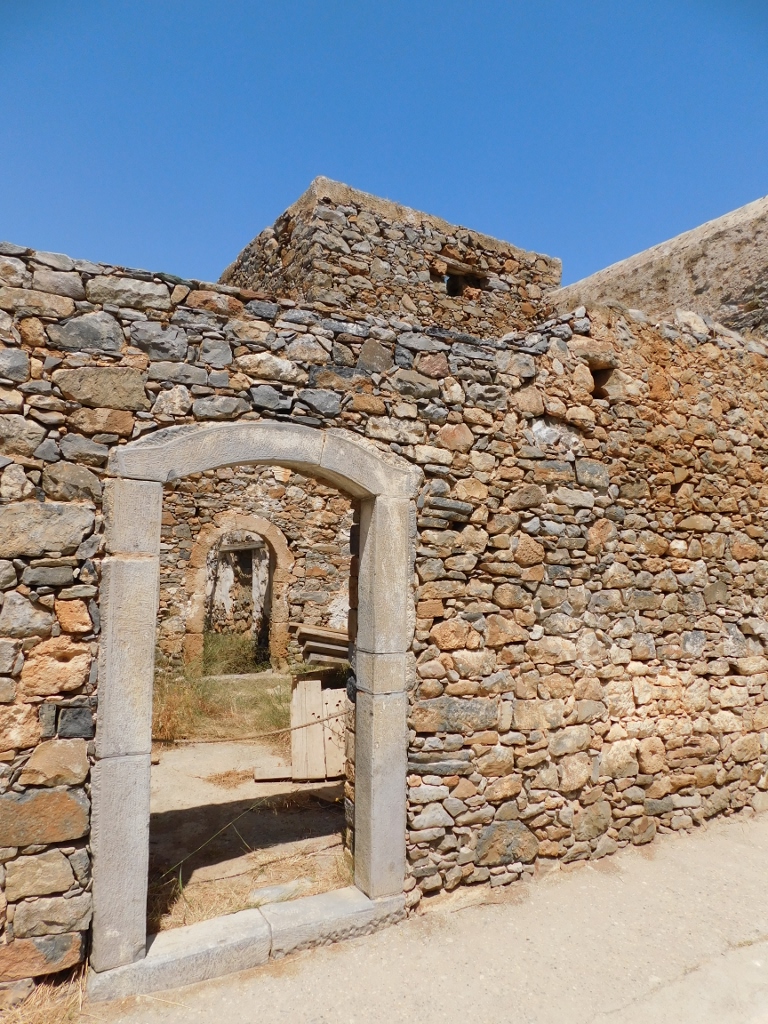 Spinalonga islet: remains of the settlement, a detail
Spinalonga islet: remains of the settlement, a detail
The main gate that led from the sea to the fortress is positioned on the west side, where the settlement is. One of the large buildings here was used in the 16th and the 17th centuries for the placement of the garrison, but in the 20th century it was used as the area for the disinfection of lepers. It was, however, also interesting to go out through that gate and see what it all looks like today.
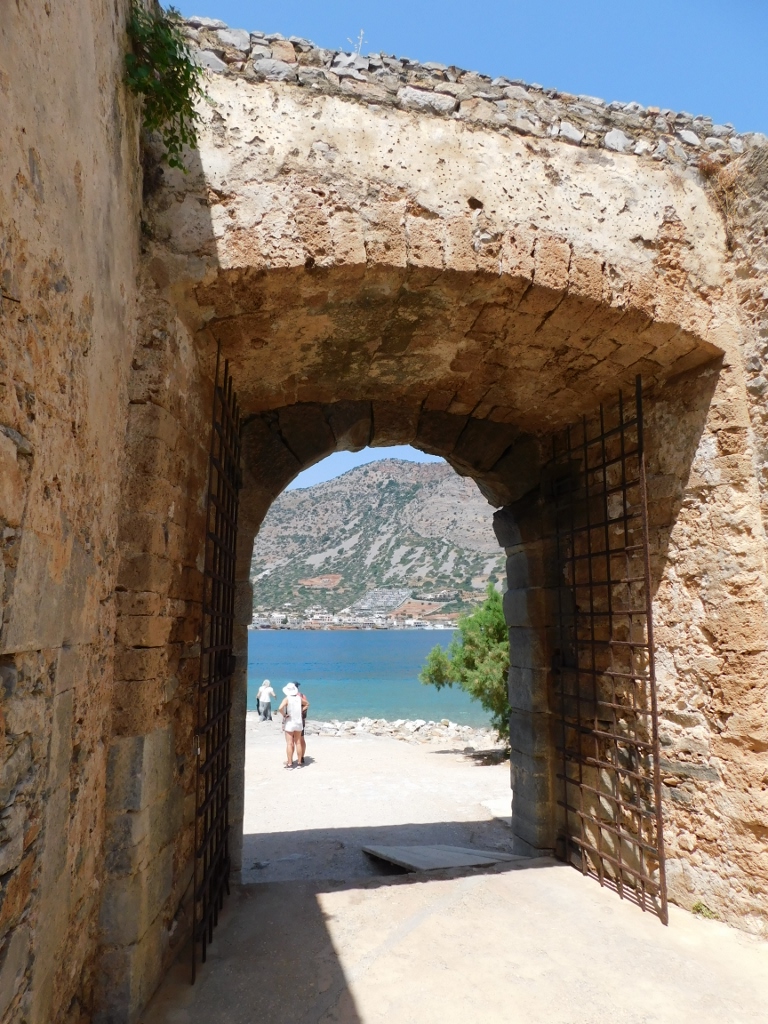 Spinalonga islet: the main gate photographed from settlement side
Spinalonga islet: the main gate photographed from settlement side
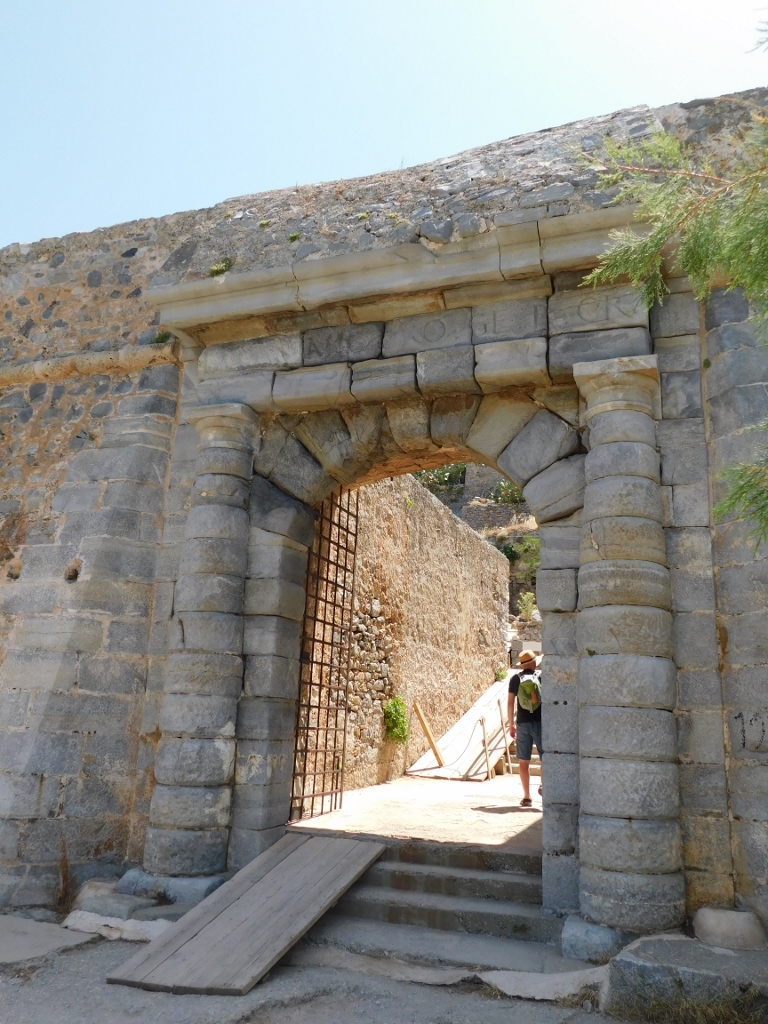 Spinalonga islet: the main gate photographed from sea side
Spinalonga islet: the main gate photographed from sea side
In this area, one can also enjoy the beauty of the sea from up close, but I soon had to start to return, since the visitors have a limited time on the islet, for they are supposed to return to the mainland by the same boat they came here on.
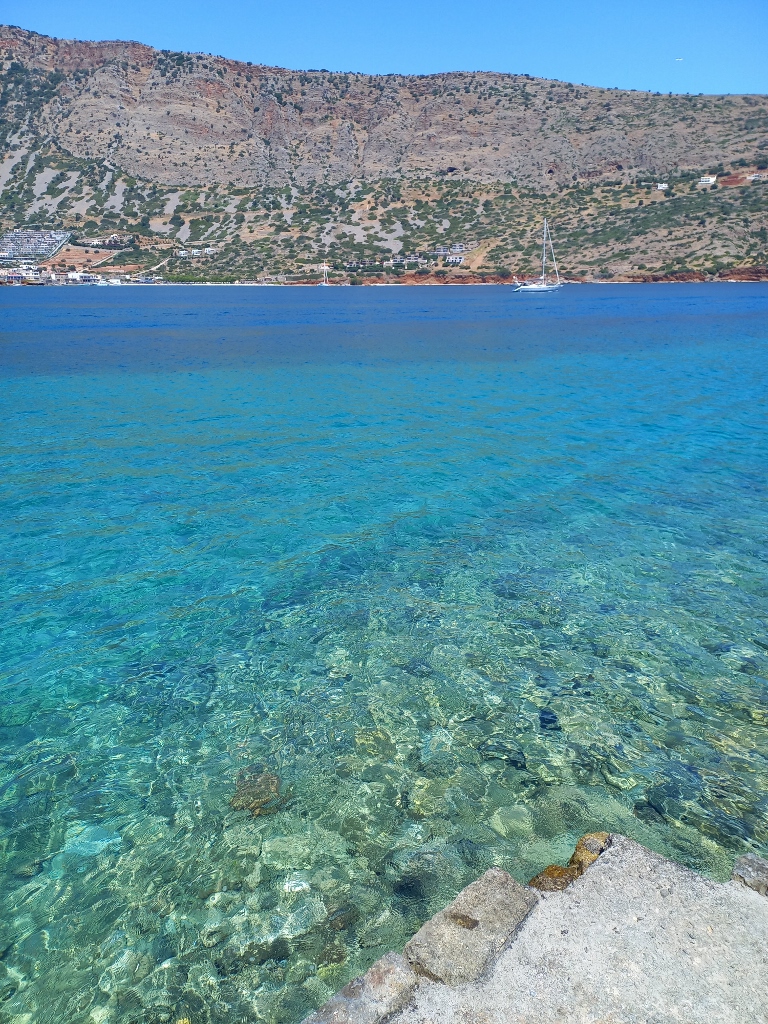 Spinalonga islet: the sea by the main gate
Spinalonga islet: the sea by the main gate
Now I just sauntered leisurely along the main street of the settlement where I took photos of different picturesque details.
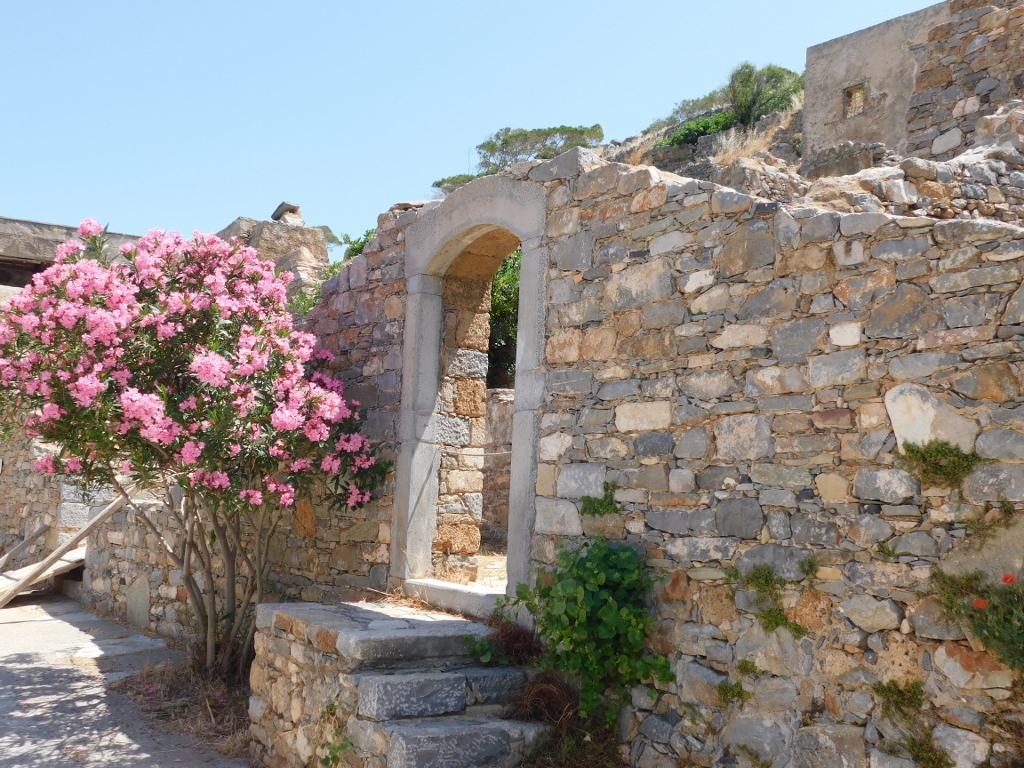 Spinalonga islet: remains of the settlement, a detail
Spinalonga islet: remains of the settlement, a detail
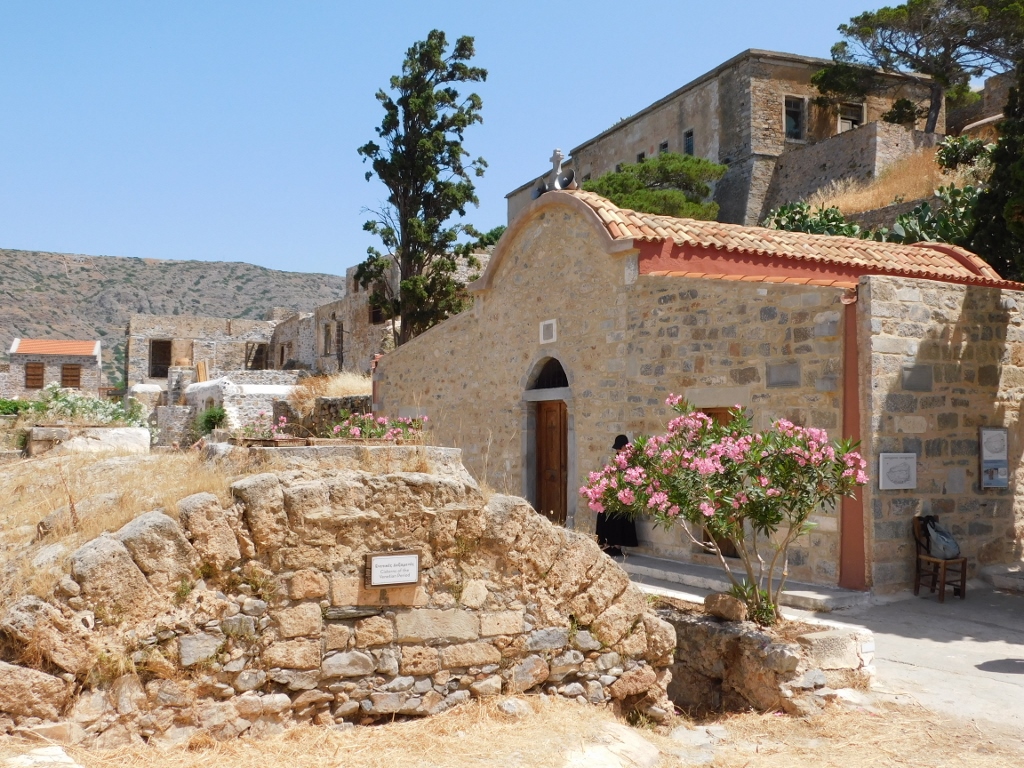 Spinalonga islet: remains of the settlement, a detail
Spinalonga islet: remains of the settlement, a detail
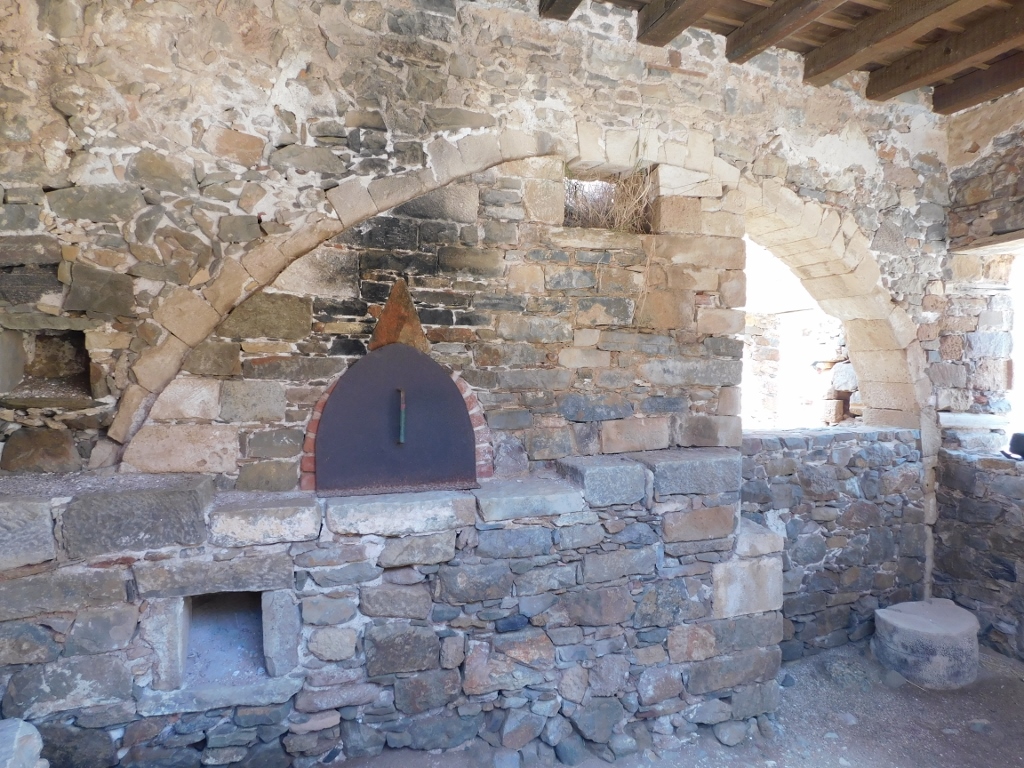 Spinalonga islet: remains of the settlement, a detail
Spinalonga islet: remains of the settlement, a detail
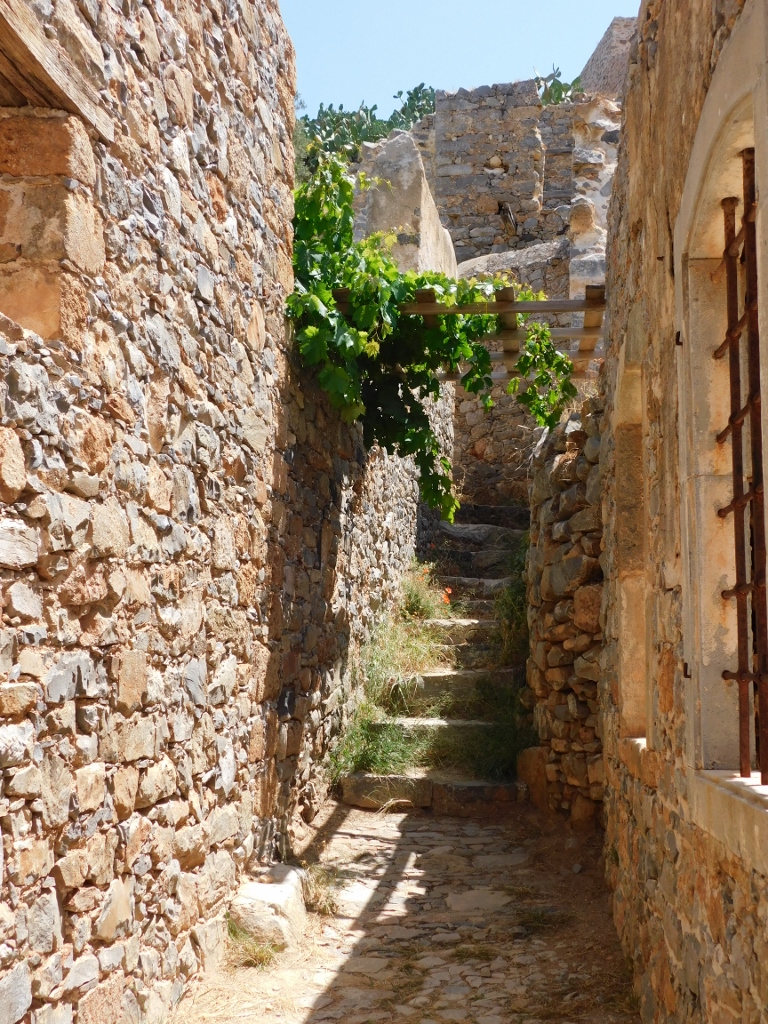 Spinalonga islet: remains of the settlement, a detail
Spinalonga islet: remains of the settlement, a detail
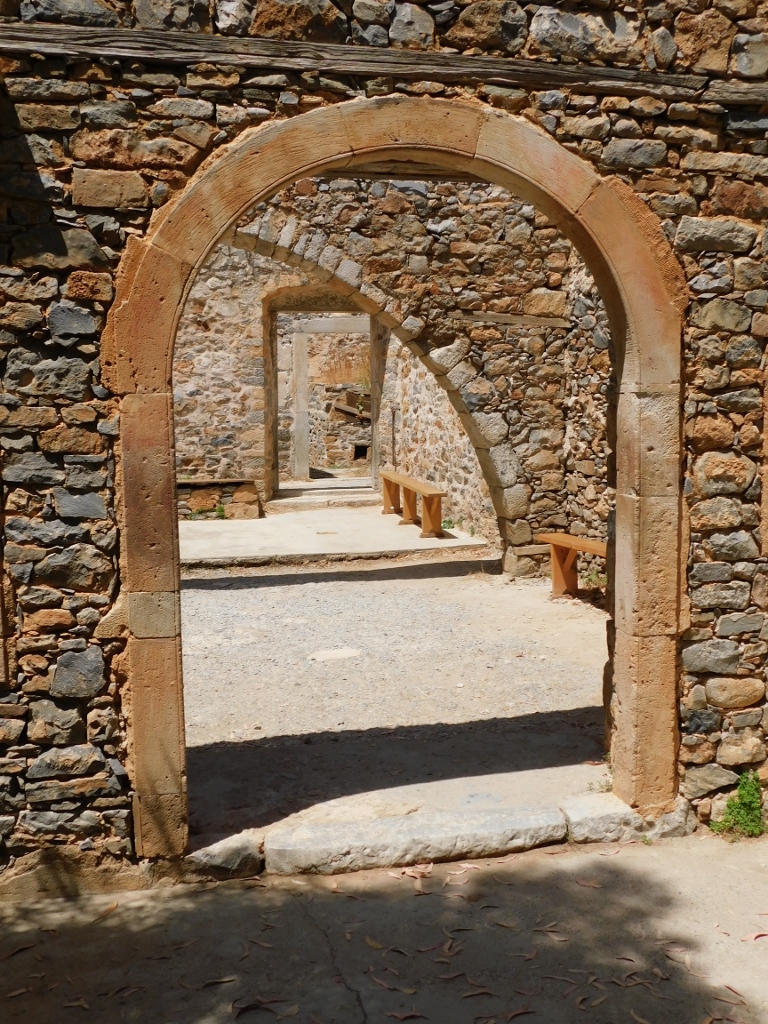 Spinalonga islet: remains of the settlement, a detail
Spinalonga islet: remains of the settlement, a detail
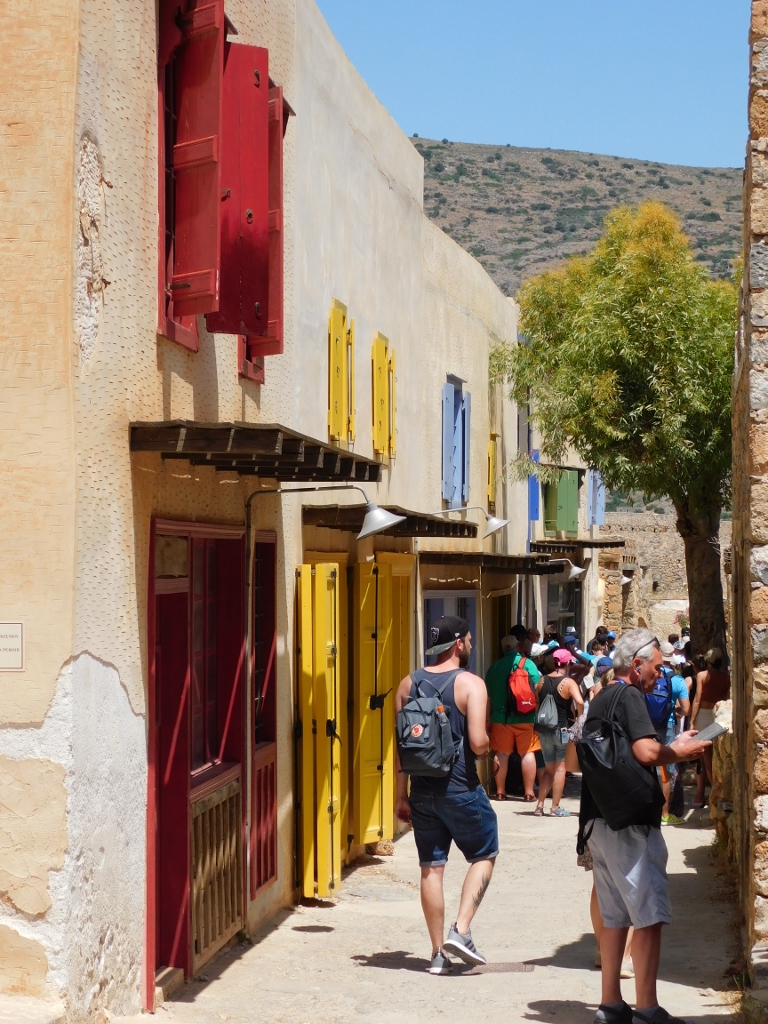 Spinalonga islet: remains of the settlement, a detail
Spinalonga islet: remains of the settlement, a detail
Towards the end I walked through a tunnel and then I reached the pier where I had to wait a little for the time when I was to return to Elounda. I took the opportunity to admire again the beauty of the sea.
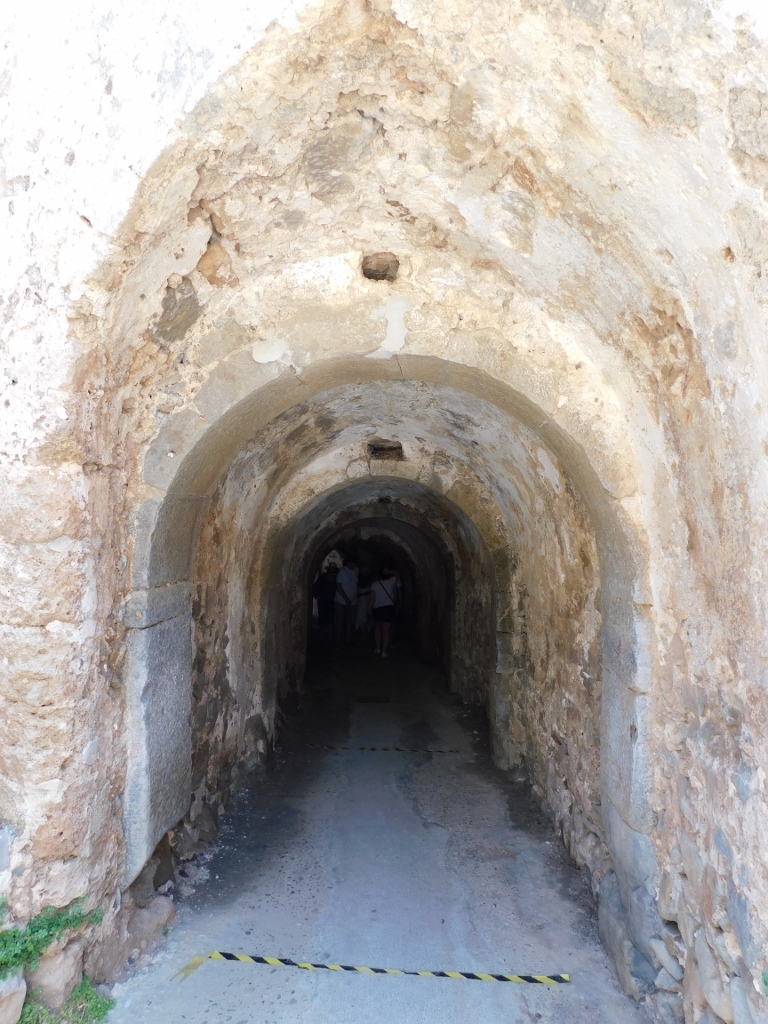 Spinalonga islet: a tunnel near the pier
Spinalonga islet: a tunnel near the pier
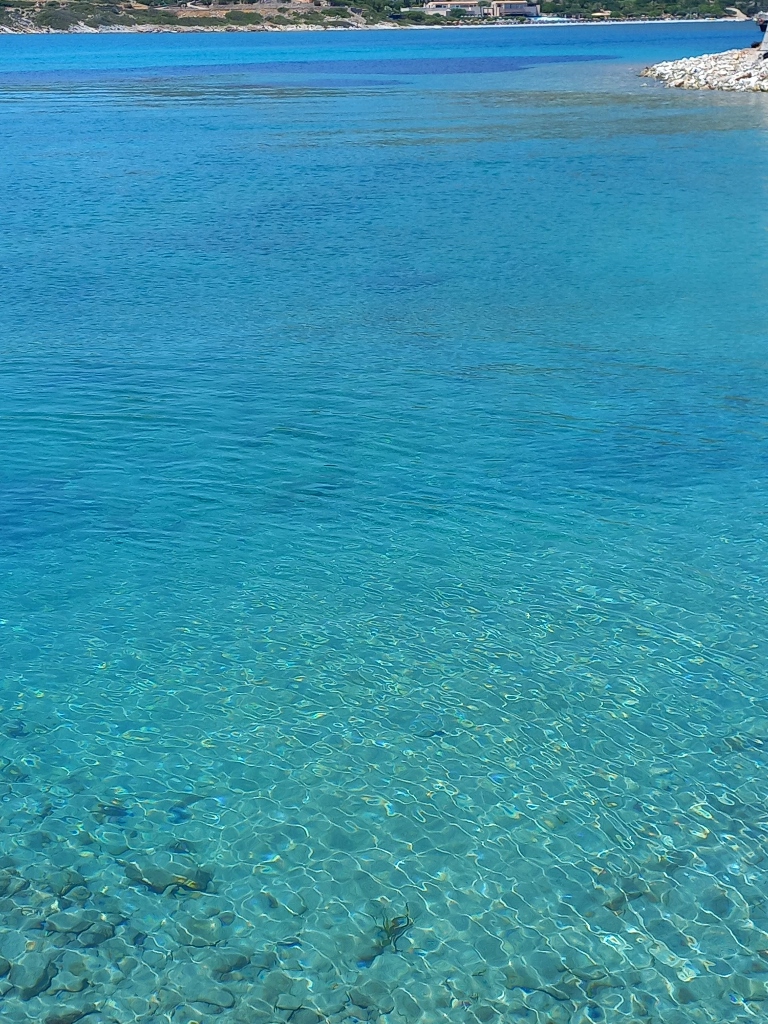 Spinalonga islet, a detail
Spinalonga islet, a detail
Soon after, I left Spinalonga by the tourist boat.
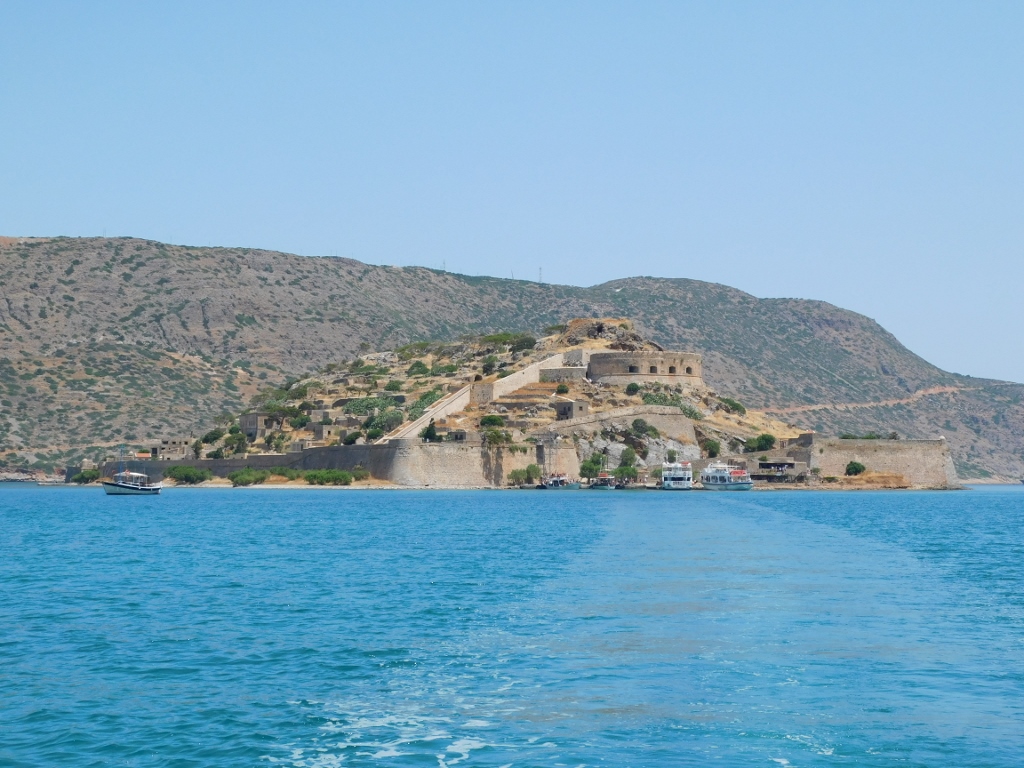 Spinalonga
Spinalonga